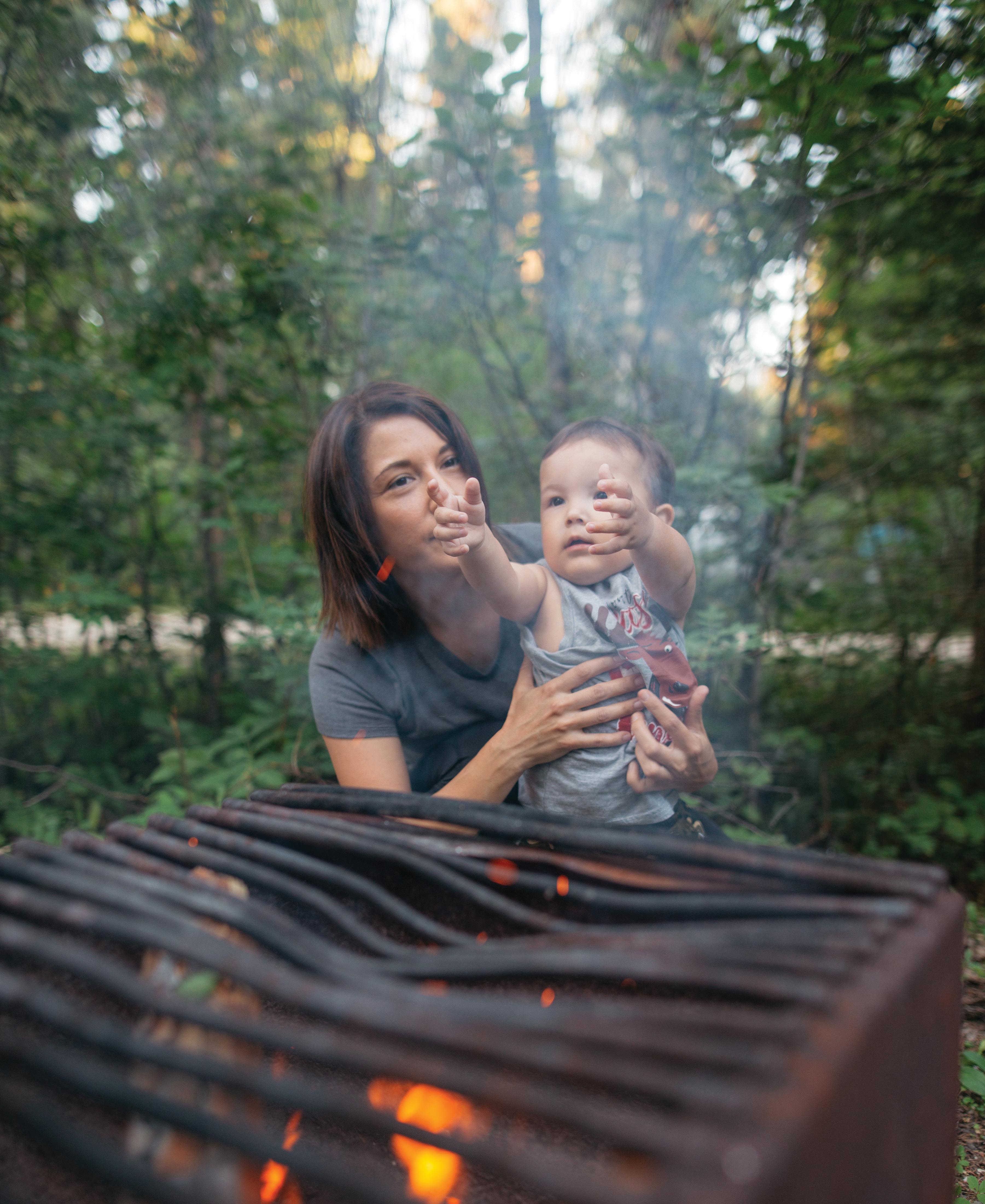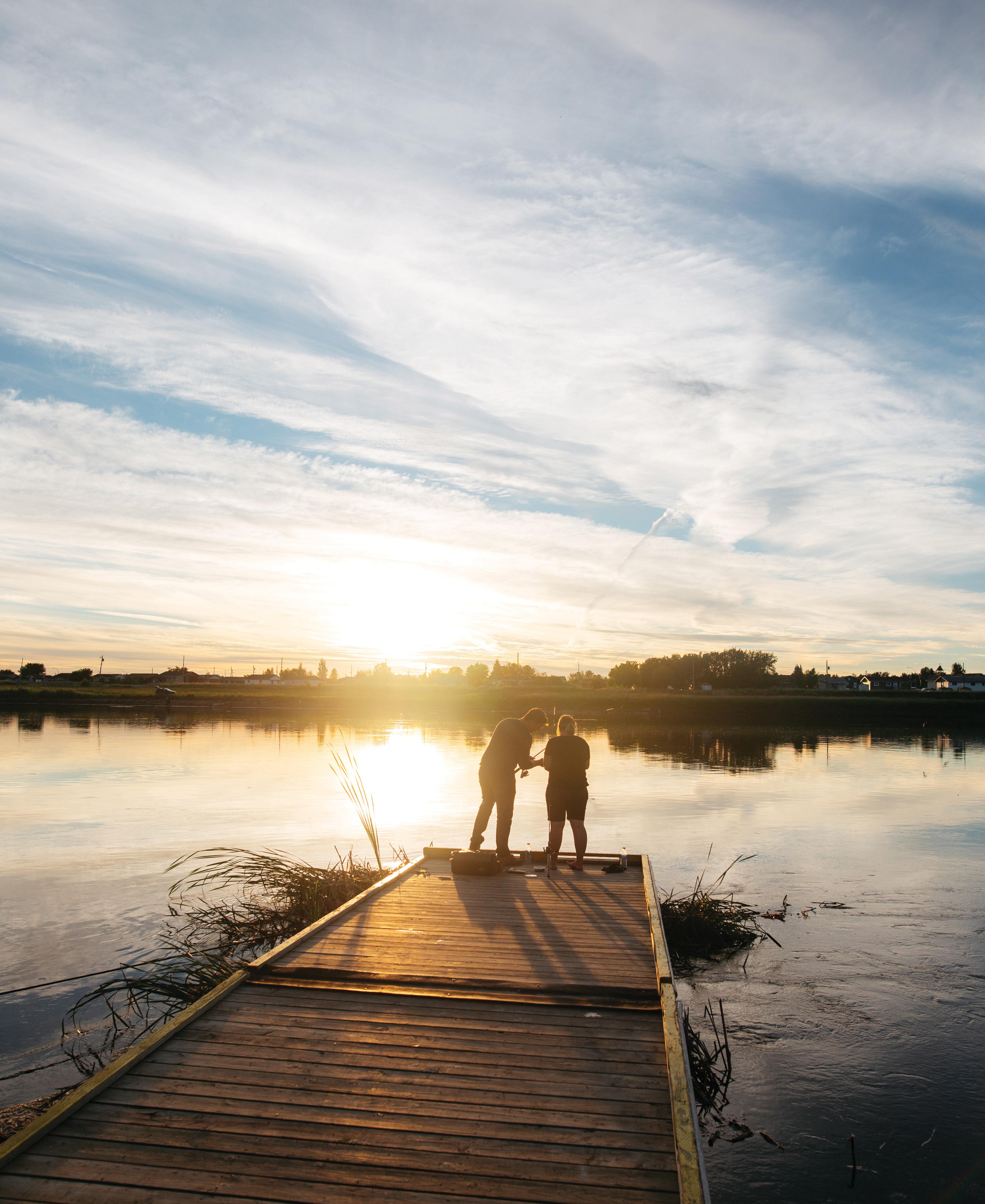

NORTHERN MANITOBA
TOURISM STRATEGY
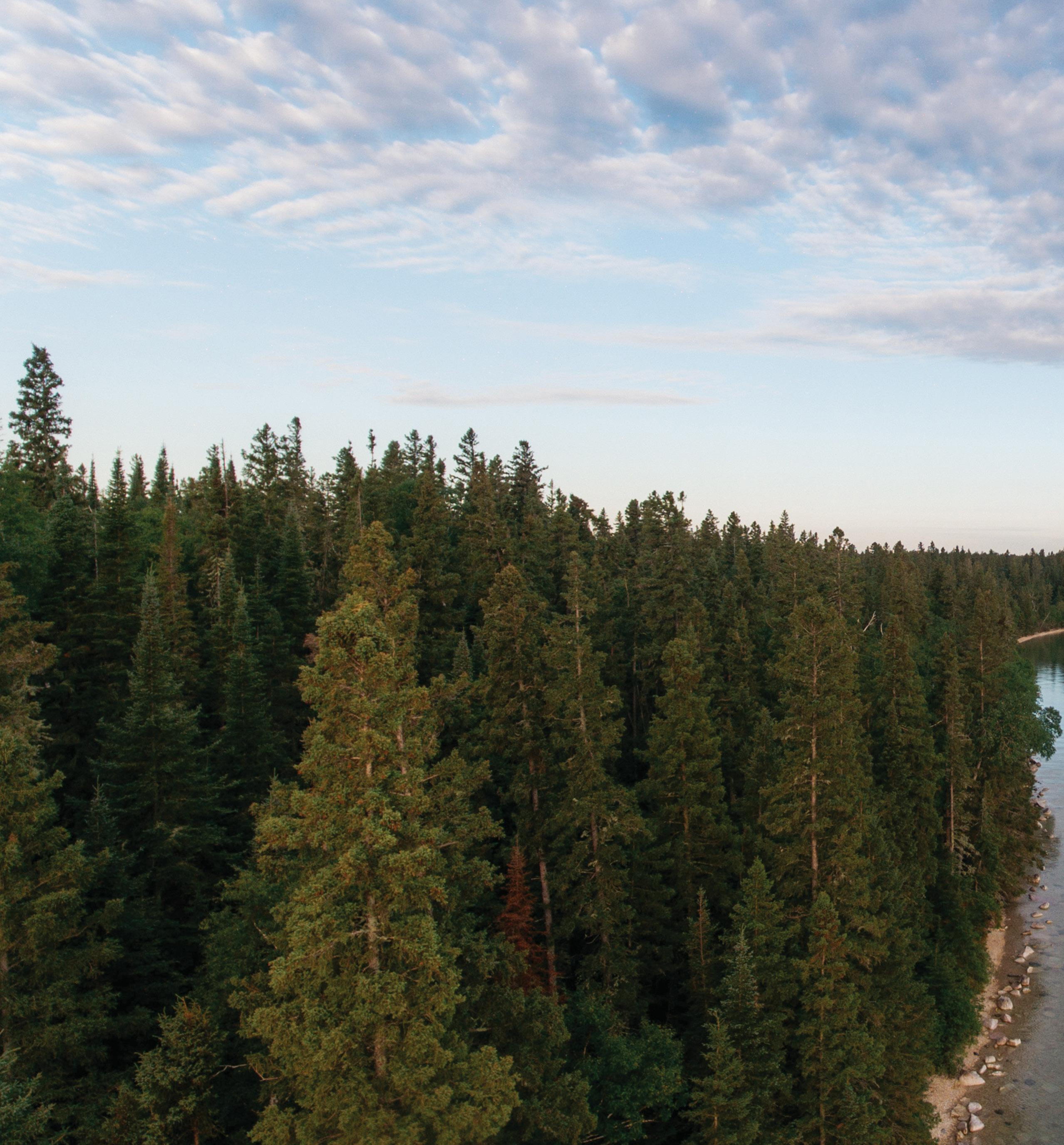
Acknowledgement
Manitoba is located on Treaty Territories and the ancestral lands of the Anishinaabeg, Anishininewuk, Dakota Oyate, Denesuline and Nehethowuk Nations. We acknowledge Manitoba is located on the Homeland of the Red River Métis. Northern Manitoba includes lands that were and are the ancestral lands of the Inuit. We respect the spirit and intent of Treaties and Treaty Making and remain committed to working in partnership with First Nations, Inuit and Métis people in the spirit of truth, reconciliation and collaboration.
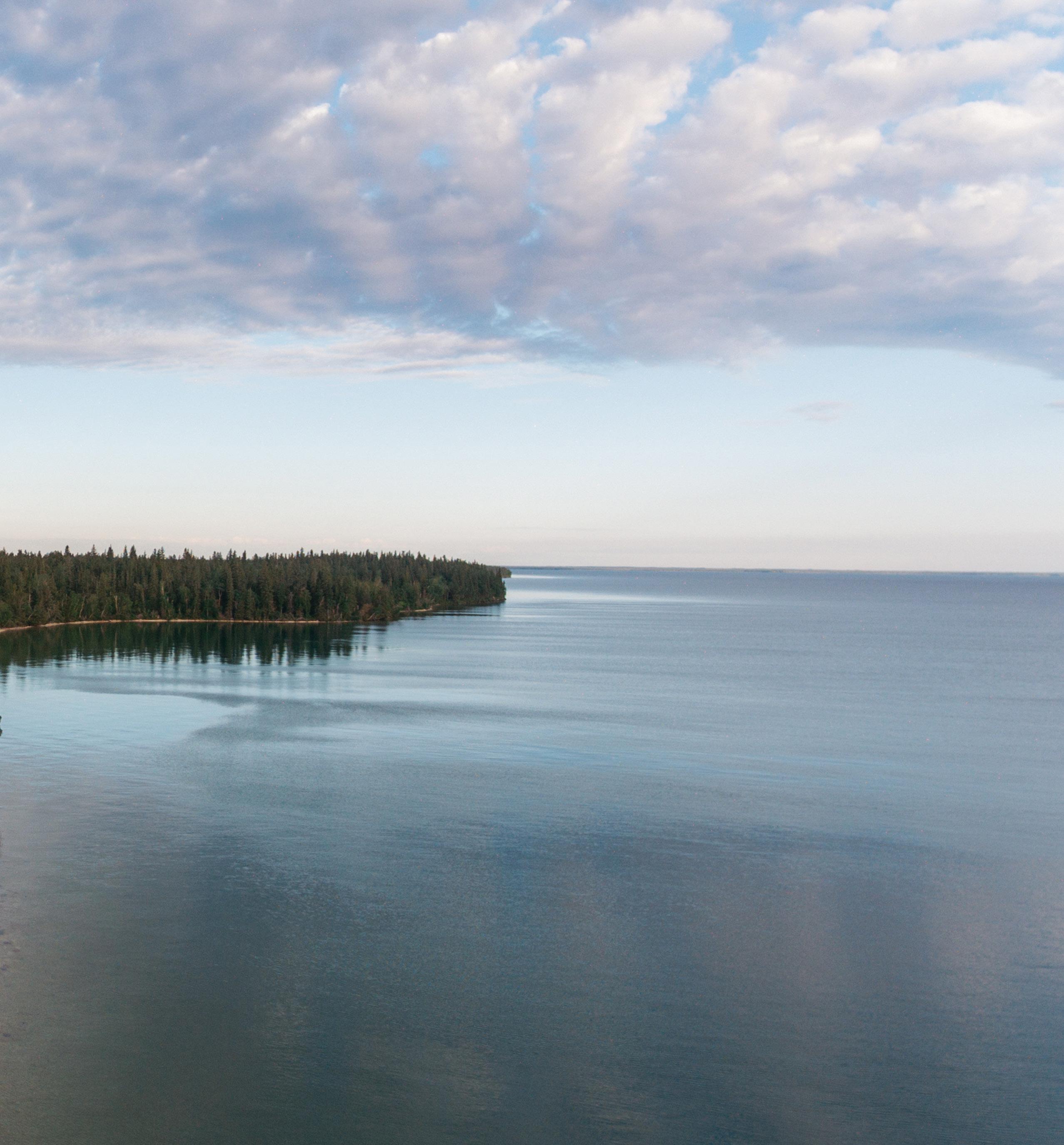
Acknowledgement 2
Introduction 4
Approach 6
The Tourism Economy 7
Potential Markets for Northern Manitoba 8
State of the Industry 14
Industry Trends 17
Strengths, Weaknesses, Opportunities and Threats 20
Vision, Mission and Target 22
Goals and Initiatives 23
Next Steps 27
Appendix A: Community Assessment 28
Appendix B: Project Team 34
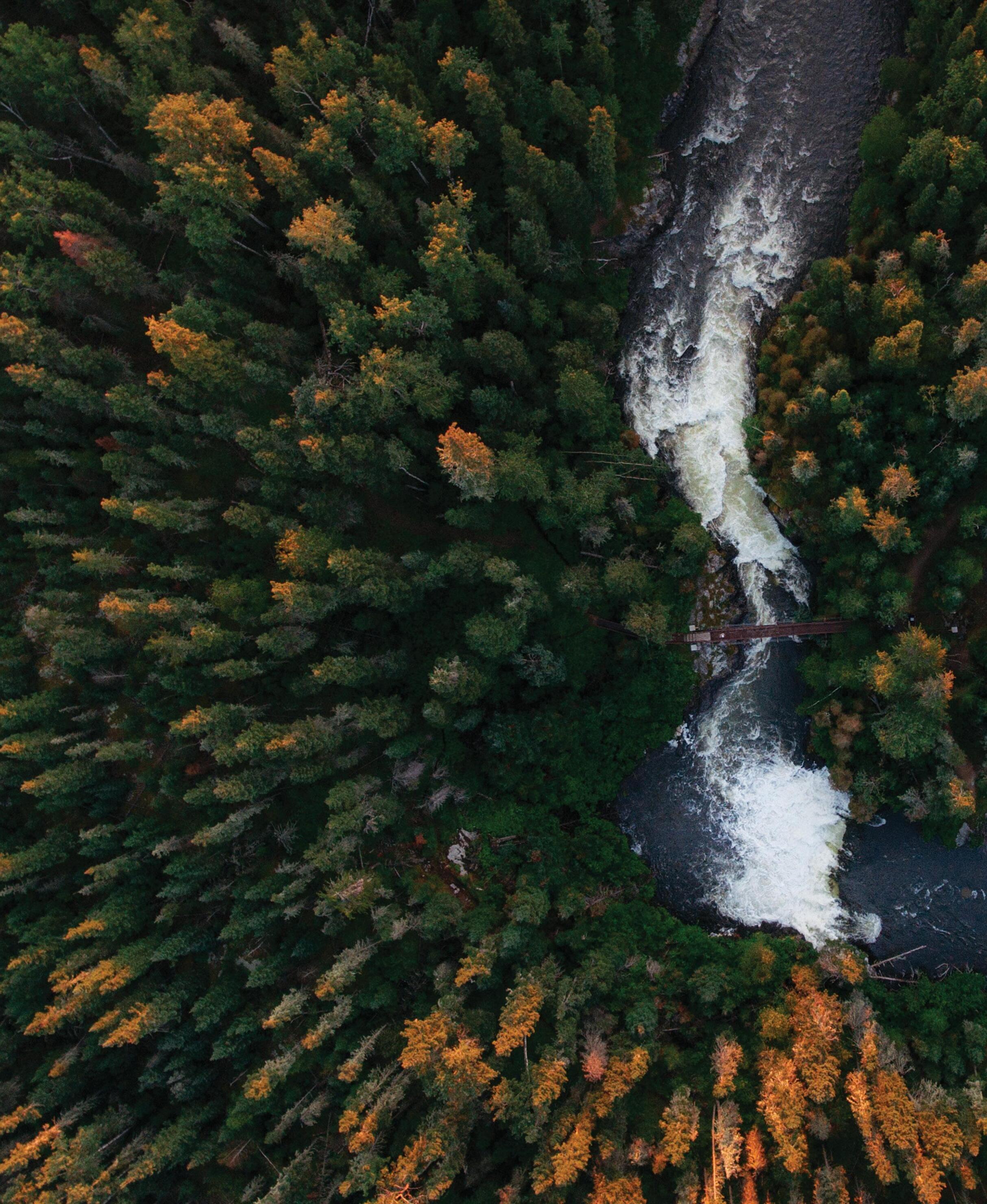
INTRODUCTION
This updated Northern Manitoba Tourism Strategy strives to address advancements made, the profound need for industry recovery, and alignment with provincial tourism and economic development strategies. It establishes the pathway to retain and expand the visitor experience base in the North, enhance consumer marketing through more targeted approaches and build community leadership.
The Northern Manitoba Tourism Strategy has strong linkages to and alignment with several Manitoba strategies, including the province’s Look North Action Plan, which identifies building the tourism sector as a strategic priority. The Manitoba Tourism Strategy identifies Indigenous, water-based, wilderness and wildlife experiences as priorities for development and marketing. In fact, the Northern Tourism Strategy is an implementation plan that works to advance the goals of the Manitoba Tourism Strategy. Further, the Northern Manitoba Tourism Strategy is well-aligned with the Manitoba Indigenous Tourism Strategy, where development of Indigenous tourism in the North is identified as a significant opportunity.
Northern Manitoba is defined, for tourism purposes, to be the region of Manitoba north of the 53rd parallel. It is a vast territory comprising 60 per cent of the land area of Manitoba, and has a strong foundation in tourism thanks to world-class wildlife viewing in Churchill and established hunting and fishing operators across the region. The natural assets include thousands of lakes, vast boreal forest, major tracts of Laurentian Shield and an Arctic region bordering the Hudson Bay.
↑ Snow Lake
2017–2021 SUCCESSES
In 2017, Travel Manitoba launched the Northern Manitoba Tourism Strategy 2017–2022, a five-year plan to support the growth of tourism in northern Manitoba. The strategy was developed in partnership with Tourism North, the former regional tourism association for northern Manitoba.
In 2018, Travel Manitoba initiated a pilot project that changed the delivery model for tourism marketing and product development in northern Manitoba. Under the direction of the Northern Tourism Strategy Advisory Committee, Travel Manitoba hired a Northern Tourism Consultant to lead product development initiatives, engage with northern tourism industry stakeholders and act as a Travel Manitoba presence in the North. Travel Manitoba staff, based in Winnipeg, focused on implementing marketing, partnership and market researchrelated initiatives. After two years of monitoring the pilot project and the success achieved through the Northern Manitoba Tourism Strategy, the Tourism North board officially dissolved the organization in December 2019.
Since 2017, Travel Manitoba, with the guidance of the Northern Tourism Strategy Advisory Committee, has made significant progress under the original Northern Manitoba Tourism Strategy in several priority areas, including:
• Coordinated marketing initiatives, including content development (blog posts, videos, photos), a northern website and visitor guides to promote northern destination areas.
• Completed destination area assessments for the North to identify gaps and priorities.
• Improved community engagement scores in the DestinationNext assessment over a four-year period.
• Launched place brands for Flin Flon, Thompson and The Pas / Opaskwayak Cree Nation (OCN).
• Supported the expansion of Churchill’s tourism season through the winter with the promotion of northern lights experiences.
• Supported the development and implementation of a Northern Snowmobile Tourism Strategic Plan.
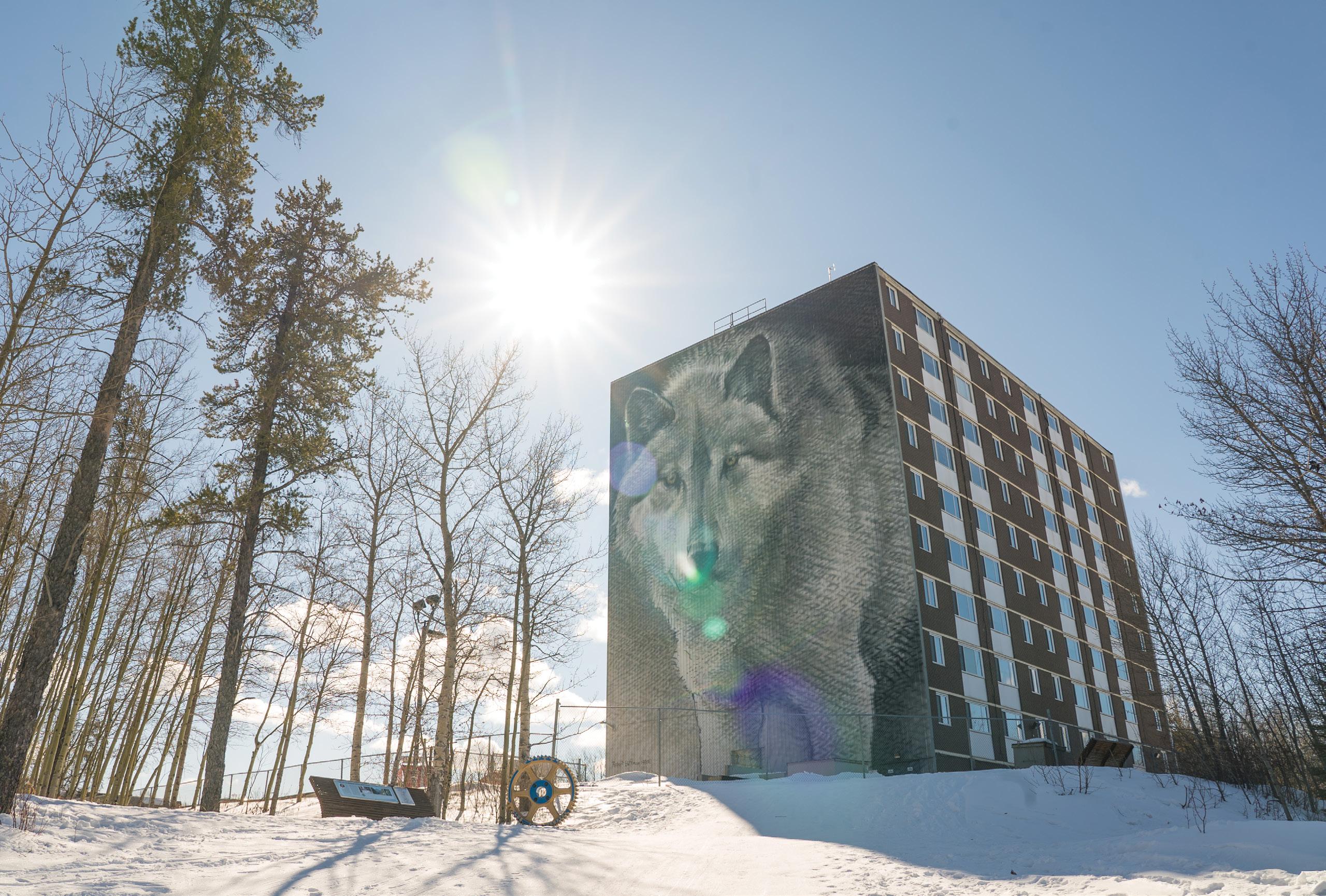
↑ Millenium Trail, Thompson
APPROACH
This updated strategy is based on significant secondary research in the areas of COVID-19 recovery forecasting, industry trends and market opportunities, both domestic and international. Industry engagement over the course of the COVID-19 pandemic also identified valuable insights and direction. The Northern Tourism Strategy Advisory Committee provided direct input into the strategy’s renewal.
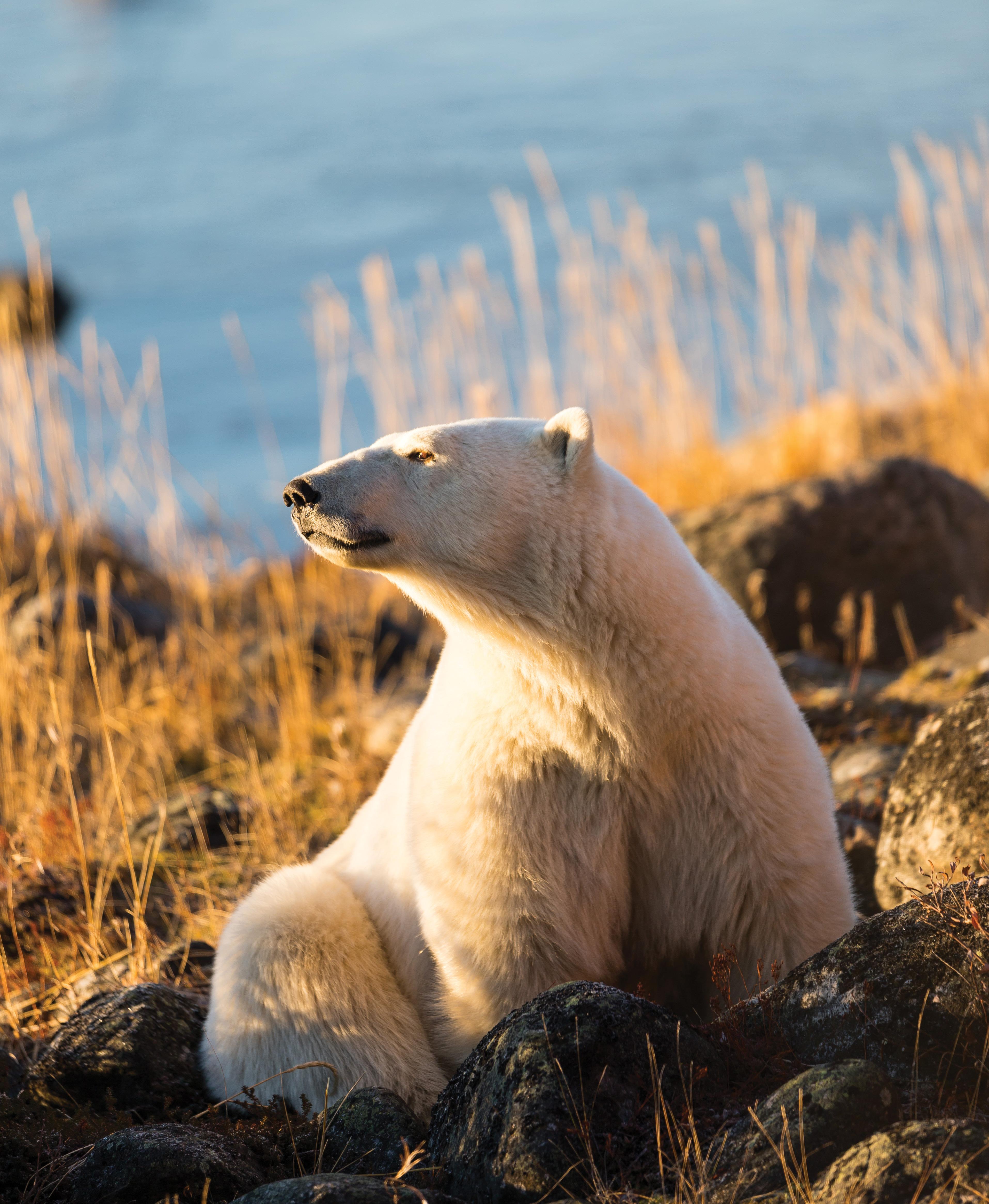
↑ Churchill
THE TOURISM ECONOMY
Economic Overview
From its post-contact history as a fur trade centre and transportation hub through its mining heritage and strength today, northern Manitoba has been a region of resource extraction and processing. The economic drivers reflect this background:
• Population of 84,168 in 2021 (a decline of six per cent over 2016).
• A young population, with more people by proportion than the Manitoba average in the 0 to 29 age category.
• Local health services, mining and advanced manufacturing as the top economic drivers of the region.
Regional unique strengths are identified as:
• non-ferrous metal production and processing (except aluminum)
• metal ore mining
• electric power generation, transmission and distribution
• pulp, paper and paper board mills
Sectors identified as job growth areas, but not yet economic drivers, are:
• local construction and development
• education and knowledge creation
The northern economy demonstrates a higher number of lower-income households and fewer higher-income households than Manitoba as a whole. Therefore, it likely lags behind Manitoba as a whole in household disposable income, impacting the capacity of the resident population to support tourism as investors and as visitors.
Tourism as an Economic Driver
Data on the tourism economy of Manitoba’s North provides comparative insights for this region of the province in relation to other regions. The following information is derived from Statistics Canada data for 2018 and 2019:
• The northern Manitoba region generated 175,000 overnight visits annually. This represents five per cent of total overnight visits recorded in Manitoba.
• The region was third in terms of total overnight expenditure ($92 million), representing eight per cent of total Manitoba tourism revenue.
• Overnight international visitors spent more in northern Manitoba than in any other part of the province ($1,014 on average per trip).
• The top visitor experiences for domestic visitors in northern Manitoba were:
– national, provincial or nature park (32 per cent)
– beach (28 per cent)
– sightseeing (25 per cent)
– boating/canoeing/kayaking (21 per cent)
– dining out/restaurant/bar/club (18 per cent)
– fishing (18 per cent)
– camping (16 per cent)
– hiking or backpacking (15 per cent)
SOURCE: NATIONAL TOURISM SURVEY AND VISITOR TOURISM SURVEY, STATISTICS CANADA
POTENTIAL MARKETS FOR NORTHERN MANITOBA
ORIGIN OF CHURCHILL VISITORS
Pre-pandemic, the majority of visitors to Churchill originated from the U.S. or overseas markets (80.2 per cent) and the remaining 20 per cent were from Canada. While this shifted somewhat to domestic markets during the pandemic, Churchill is expected to return to an international market focus during recovery.
In contrast, other destinations in northern Manitoba are more focused on regional markets. Based on analysis of mobile phone data for several northern Manitoba communities and points of interest (excluding Churchill), it is clear the largest number of visitors to the region reside in Winnipeg.
The analysis below focuses on visitation to Flin Flon, The Pas / OCN and Thompson in 2019. In 2019, 70 per cent of visitors to these communities were from within Manitoba, 24 per cent from within the rest of Canada, four per cent from the U.S. and two per cent from other international markets. Overall, 45 per cent of visitors were from Winnipeg. Not surprisingly, 65 per cent of visitors are travelling more than 300 kilometres to reach their final northern destination. Winnipeggers represent significant market potential for northern Manitoba destinations other than Churchill.
VISITATION TO NORTHERN MANITOBA BY METRO REGION, EXCLUDING CHURCHILL (MOBILE PHONE DATA, NEAR INC.)
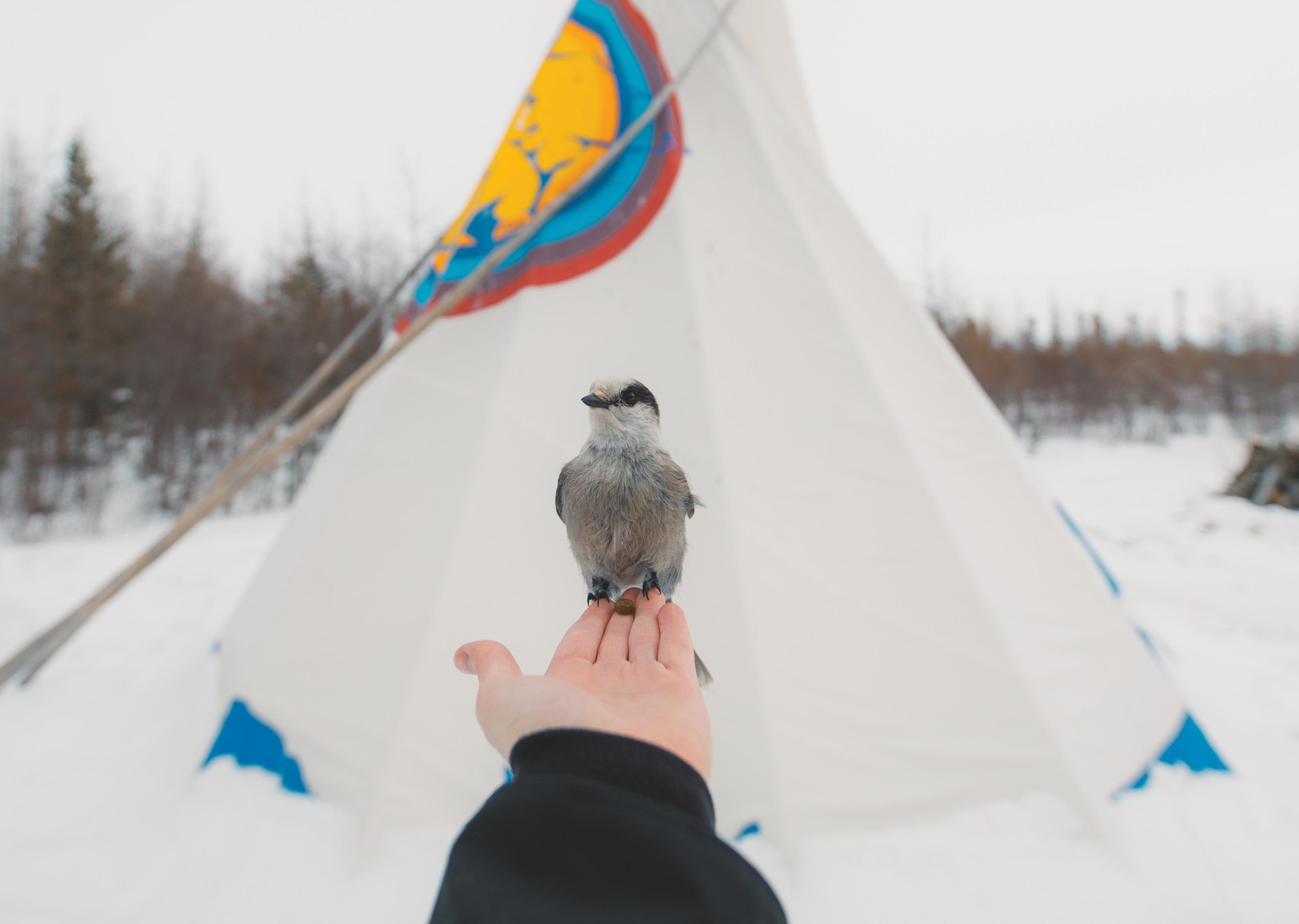
Indigenous Tourism Potential
Indigenous tourism has been identified as a significant development opportunity for Manitoba’s North. Seventy-five per cent of northern Manitoba’s population identifies as Indigenous.
With 26 First Nation communities in Manitoba’s North, there is great potential for collaboration with Indigenous communities to develop land-based cultural tourism experiences.
Travel Manitoba conducted two surveys in summer 2021 to evaluate the potential for developing Indigenous tourism in Manitoba. The first surveyed 800 Manitoba residents and questioned their perceptions of and interest in Indigenous tourism.
Highlights from the research include:
• Fifty per cent of Manitobans are likely to seek out Indigenous tourism experiences (nine per cent very likely).
• Key opportunity groups include women, parents and younger adults. Outdoor adventure and nature experiences, as well as the chance to stay in an Indigenous accommodation, such as a teepee, are particularly appealing to these groups.
• The key drivers of interest in an authentic tourism experience are a willingness to support Indigenous-owned businesses and a genuine desire to learn from an Elder.
• Seventy-eight per cent are keen to learn about Indigenous culture if it is led by an Indigenous person, and 72 per cent want to know their tourist dollars will directly benefit Indigenous communities.
• Key barriers to Indigenous tourism are:
– Knowledge: 63 per cent don’t know where to find information about experiences.
– Anxiety: 50 per cent are worried they might say or do the wrong thing.
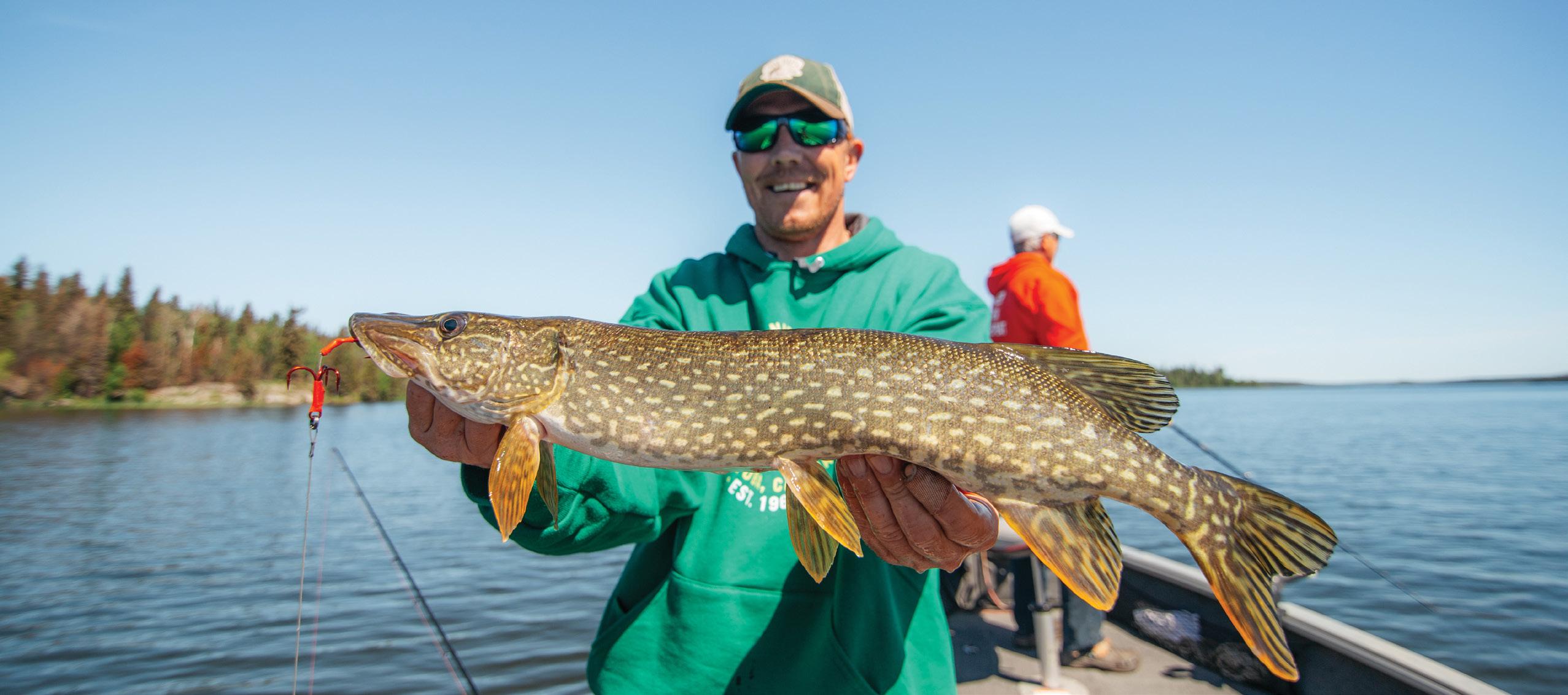
APPEAL OF AUTHENTIC INDIGENOUS TOURISM EXPERIENCES TO MANITOBANS
WILDLIFE AND NATURE EXPERIENCES (VIEWING, PLANT MEDICINE, ETC.)
EATING INDIGENOUS FOODS
CULTURAL EXPERIENCES (STORTELLING, TOURS, ETC.)
LEARNING ABOUT RESIDENTIAL SCHOOLS, TREATIES, ETC. FROM AN ELDER ATTENDING EVENTS AND FESTIVALS (POW WOWS, ETC.)
LEARNING ABOUT INDIGENOUS ARTS & CRAFTS
OUTDOOR ADVENTURES LED BY INDIGENOUS GUIDES
STAYING AT AN INDIGENOUS-OWNED WILDERNESS LODGE, YURT OR TEEPEE
SPIRITUAL EXPERIENCES (SWEATLODGE, CEREMONIES, ETC.)
HUNTING OR FISHING LED BY AN INDIGENOUS GUIDE
SOURCE: PROBE RESEARCH
The second study surveyed 500 First Nations, Inuit and Métis individuals in Manitoba. The results indicated that Indigenous Peoples in Manitoba are generally very open and welcoming to tourists and view the sharing of their culture as a way to create jobs and work toward reconciliation. Key results include:
• Three in five Indigenous respondents strongly agree that tourists would be welcome in their community. This feeling is just as strong on- and off-reserve and among both Métis and First Nations people.
• Nearly three in five also strongly agree that boosting tourism is a good way to increase employment in Indigenous communities.
• However, allowing tourists to experience spiritual or medicinal cultural practices such as sweat lodges or medicine-picking
was viewed as somewhat less acceptable. Around one in four say sharing these activities with tourists is very acceptable. Indigenous respondents were more likely to be comfortable inviting tourists to hear stories told by Elders, attend powwows, participate in craft workshops, and go on guided hunting and fishing trips.
• There is some concern about ensuring Indigenous Peoples benefit directly from tourism in their communities and that non-Indigenous people do not profit from or expropriate Indigenous culture. Three in five Indigenous people in Manitoba strongly agree that Indigenous Peoples must benefit from Indigenous tourism, and nearly one-half (particularly women) are very worried about their culture being exploited by non-Indigenous tourism operators.
INDIGENOUS PEOPLES’ PERSPECTIVE: ACCEPTABILITY OF INDIGENOUS CULTURAL OFFERINGS TO TOURISTS
LEARNING STORIES AND TEACHINGS FROM AN ELDER ATTENDING A POWWOW
LEARNING INDIGENOUS ARTS AND CRAFTS SUCH AS BEADING OR SEWING
HUNTING OR FISHING WITH AN INDIGENOUS GUIDE
STAYING OVERNIGHT IN A TEEPEE OR OTHER TRADITIONAL ACCOMODATION
PARTICIPATING IN A SWEAT LODGE
TAKING A TOUR OF A SACRED INDIGENOUS SITE
PICKING MEDICINAL PLANTS
SOURCE: PROBE RESEARCH
International Market Demand
Destination Canada routinely conducts surveys of travellers in various markets around the world, including Canada, as part of the Global Tourism Watch research program. Generally speaking, the interests of international and domestic travellers are in strong alignment with the tourism assets of northern Manitoba, particularly for wildlife and northern lights viewing.
The chart below identifies the percentage of respondents in each country with an interest in wildlife or northern lights viewing as an anchor for a potential trip, as well as how they ranked that activity compared to other activities they were provided in a list.
As an example, 28 per cent of respondents from China indicated that viewing wildlife or marine life was a trip anchor and out of all the activities listed, this was the fourth most popular among respondents. Interestingly, Mexican respondents ranked northern lights as their top trip anchor activity, with 40 per cent expressing interest. This alignment bodes well for future maintenance and enhancement of Churchill-based experiences and provides an opportunity for other northern destinations to develop products that address these interests in the future.
INTEREST IN WILDLIFE VIEWING AND NORTHERN LIGHTS BY GEOGRAPHIC MARKET
SOURCE: GLOBAL TOURISM WATCH, NOVEMBER 2020, DESTINATION CANADA
Target Market Segmentation
In 2007, Destination Canada developed a proprietary psychographic segmentation model, branded Explorer Quotient® or EQ, in conjunction with the Environics Research Group. The approach associates an individual to their intrinsic worldview and social values, then links this information to
their travel habits and motivations. The EQ segmentation system includes information on travel motivation values (psychographic), travel preferences (activities), social values (psychographic) and demographics.
No Hassle Travellers
1.6M 11.0
Gentle Explorers
Virtual Travellers
Authentic Experiencers
Cultural Explorers
3.4M 22.7
Mature Empty Nesters
Middle-Aged Families
1.3M 9.0
Mixed Families
Mature singles and couples without children at home, who are in or nearing retirement. An escapist that searches for relaxation and simplicity. A worry-free traveller that spends time with family and friends.
Middle-class families with children at home; higher rates of 4+ persons at home; below-average rates of travel. Likes returning to past destinations and enjoys the security of familiar surroundings.
Middle-aged families with lower levels of educational attainment, living outside of urban areas. Prefers the comforts of home and does not travel often.
1.4M 9.7
Cultural History Buffs
Personal History Explorers
1.2M 7.7
1.1M 7.4
Established Families
Young Singles & Couples
Affluent, highly educated mature singles and couples with older children, living in urban and suburban neighbourhoods. Appreciates the beauty of natural and cultural environments.
Young, highly educated diverse singles and couples without children at home, living in urban neighbourhoods. Wants to immerse in culture and people when travelling. Positive, openminded, creative, risk-taker.
Young Singles & Couples
Young, educated singles and couples, earning below-average incomes. Strives to understand the history and culture of others.
1.1M 7.5
Mixed Families
Diverse families living in both urban and rural areas; lower levels of educational attainment and earning below-average incomes. Travels to deepen understanding of ancestry and heritage.
Rejuvenators 1.4M 9.6
Mature Singles & Couples
Mature singles and empty nesters; have lower levels of educational attainment and earn below-average incomes. Travel is a chance to disconnect, rest, recharge and renew.
Free Spirits 2.3M 15.4
Established Families
Ethnically diverse, well-educated families that earn moderate incomes, living in urban and suburban areas. Thrill-seeking hedonists with insatiable need for the exciting and the exotic.
More recently, Destination Canada has worked with Environics to develop a link between EQ and the PRIZM segmentation system. PRIZM uses social values to generate geo-demographic clusters at the postal code and zip code level. EQ can be overlaid with PRIZM to provide more detailed and actionable targets to support marketing activities.
EXPLORER QUOTIENT SEGMENT OVERVIEW – CANADA
➊ Manitoban Travellers with an Interest in Northern Nature and Culture are grouped into three target audiences: Young Cultural Explorers, Mature Authentic Experiencers and Free Spirit Families.
YOUNG CULTURAL EXPLORERS
Total Population
Target group: 119,588 / 8.7%
Market: 1,375,333
Total Households
Target group: 59,235 / 11.4%
Market: 517,747
Avg. Household Income: $76,289
Median Household
Maintainer Age: 43
Travel Manitoba has evaluated mobile phone data, survey data and other northern Manitoba visitation data sources to develop custom target segments using EQ and PRIZM. These segments are expected to evolve over time as new data is gathered and new experiences are developed. Currently, three broad categories have been identified:
MATURE AUTHENTIC EXPERIENCERS
Total Population
Target group: 204,138 / 14.8% Market: 1,375,333
Total Households
Target group: 75,879 / 14.7%
Market: 517,747
Avg. Household Income: $139,489
Median Household
Maintainer Age: 57
Married/Common-Law 61.4%
Couples with kids at home 45.7% University degree 32.5%
FREE SPIRIT FAMILIES
Total Population
Target group: 47.413 / 3.4% Market: 1,375,333
Total Households
Target group: 16,065 / 3.4% Market: 517,747
Avg. Household Income: $111,882
Median Household
Maintainer Age: 47
Married/Common-Law: 60.8%
Couples with kids at home: 56.9% University degree: 29.7%
➋ Manitoban Travellers with an Interest in Hunting, Fishing and Snowmobiling are grouped into two target audiences: Rural Rejuvenators and Rural No Hassle Travellers
RURAL REJUVENATORS
Total Population
Target group: 195,546 / 14.2% Market: 1,375,333
Total Households
Target group: 70,392 / 13.6% Market: 517,747
Avg. Household Income: $101,109
Median Household Maintainer Age: 56
Married/Common-Law: 64.0%
Couples w/ kids at home: 46.2% University degree: 34.7%
RURAL NO HASSLE TRAVELLERS
Total Population
Target group: 285,206 / 20.7%
Market: 1,375,333
Total Households
Target group: 94,679 / 18.3% Market: 517,747
Avg. Household Income: $96,995
Median Household Maintainer Age: 53
Married/Common-Law: 59.9%
Couples w/ kids at home: 44.9% University degree: 29.5%
➌ Out-of-Province Travellers Interested in Churchill are grouped into three target audience groupings: Authentic Experiencers, Cultural Explorers and Personal History Explorers. During the pandemic, Travel Manitoba targeted Manitobans to visit Churchill. However, as the international travel market recovers, marketing for Churchill is expected to shift back to out of province markets with a significant focus on U.S. and international markets.
AUTHENTIC EXPERIENCERS
Total Population
Target group: 2,936,964 / 12.1%
Market: 24,243,459
Total Households
Target group: 1,062,386 / 11.4%
Market: 9,279,845
Avg. Household Income: $185,617
Median Household Maintainer Age: 58
Married/Common-Law: 61.3%
Couples w/ kids at home: 48.8% University degree: 39.4%
CULTURAL EXPLORERS
Total Population Target group: 1,932,611 / 8% Market: 24,243,459
Total Households Target group: 922,273 / 9.9% Market: 9,279,845
Avg. Household Income: $125,705
Median Household Maintainer Age: 45
Married/Common-Law: 49.5%
Couples w/o kids at home: 46.4% University degree: 46.5%
PERSONAL HISTORY EXPLORERS
Total Population Target group: 1,838,609 / 7.6%
Market: 24,243,459
Total Households Target group: 627,681 / 6.8% Market: 9,279,845
Avg. Household Income: $127,855
Median Household Maintainer Age: 54
Married/Common-Law: 60.9%
Couples w/ kids at home: 50.4%
High-school certificate or equivalent: 29.5%
STATE OF THE INDUSTRY
The impact of COVID-19 on Manitoba’s northern tourism sector continues to be profound and pervasive. While the full ramifications may not be apparent for years to come due to the evolving nature of the pandemic, it is evident that tourism is one of the hardest-hit industries. Tourism was the first to be impacted and will take the longest to recover.
Manitoba’s northern tourism industry has faced additional barriers, including periods of travel restrictions to northern Manitoba, reduced flight and rail access as well as a closed international border that impacted many businesses reliant on U.S. and overseas clients.
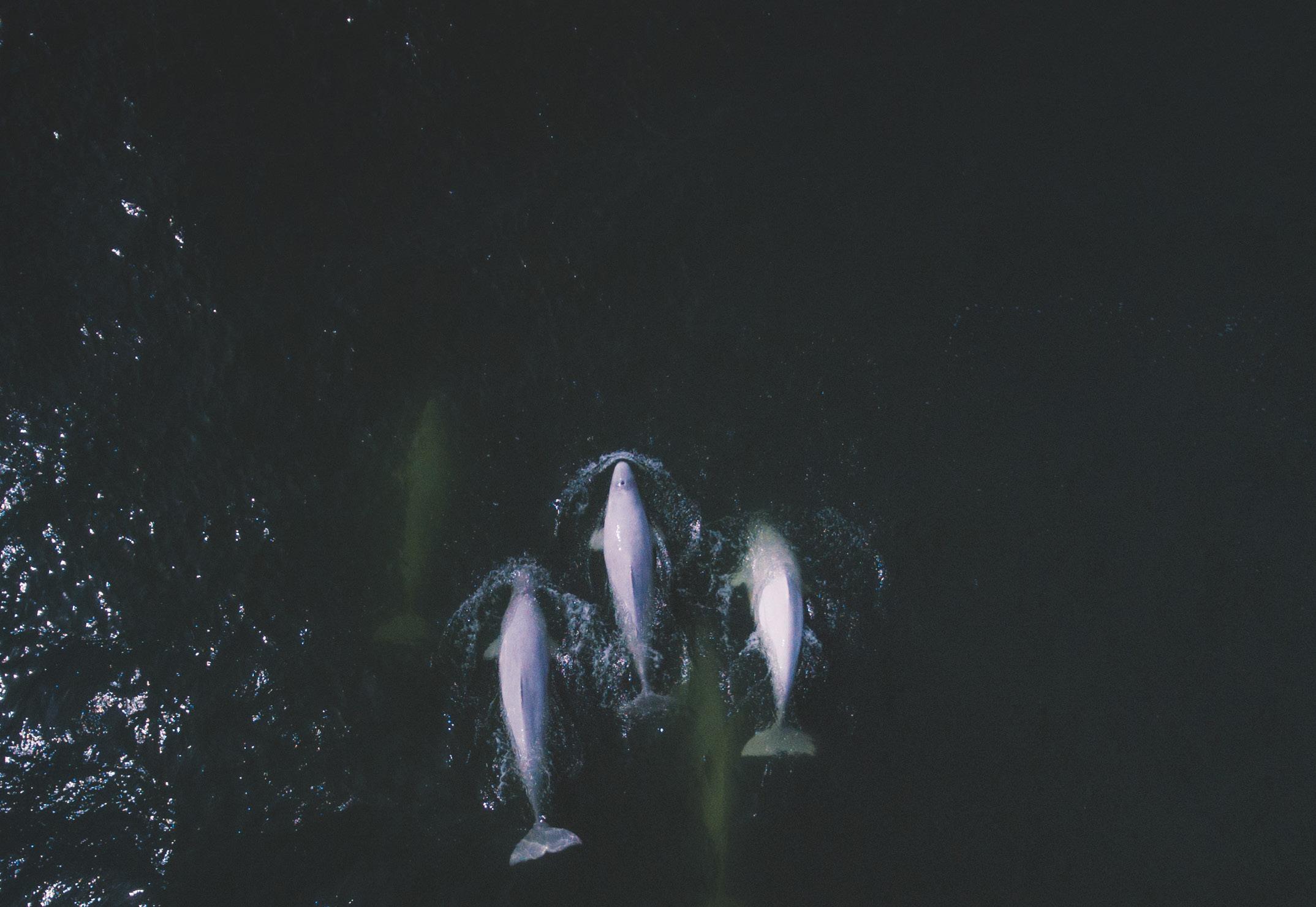
Northern Manitoba Tourism Experiences – Supply
Since the original Northern Manitoba Tourism Strategy launched in 2017, Travel Manitoba has worked with industry and government partners to build the tourism readiness capacity of operators in northern Manitoba. This process has involved one-on-one evaluations of businesses to assess their tourism readiness status, identification of funding (where needed) to encourage development, and ongoing engagement and support. More recently, Travel Manitoba implemented the Tourism Innovation and Recovery Fund, which supported 12 experience development and enhancement projects in northern Manitoba. These projects will ultimately lead to the launch of additional market-ready experiences in the North.
Export-ready tourism businesses in the North are generally clustered in Churchill, as well as in the hunting and fly-in fishing sectors. These businesses have been particularly hard hit by the pandemic and may need additional support through the recovery process to pivot to new markets and adapt to changing consumer demand.
In total, 117 tourism businesses in northern Manitoba received a tourism readiness evaluation. This does not represent all tourism businesses in the North as, in some cases, Travel Manitoba was not able to connect with all businesses during the timeframe of the study and some businesses in the early phases of start-up were not evaluated. Though not complete, the assessment represents an important snapshot in time that can be built upon and measured for future growth and progress. Seventy-three businesses were categorized as market-ready and 11 as export-ready. Lodges and outfitters, as well as accommodation providers, represented the highest number of businesses.
Churchill is home to the most significant concentration of tourism businesses in the North, followed by Thompson, The Pas / OCN and Flin Flon. These tourism hubs are important from a product development and marketing perspective, since they are potential tourist draws with a cluster of existing experiences, accommodations and services.
↑ Churchill
Defining Tourism Readiness
Doors Open: A Manitoba registered business that has all required licences, permits and insurance in place to operate legally and has met requirements that would allow for a selfguided tourism experience
Visitor-Ready: A Manitoba registered business that has all required licences, permits and insurance in place to operate legally and has frontline staff.
Market-Ready: A business that provides an experience and markets to potential domestic visitors, communicates with potential visitors year-round and is ready to accept advanced reservations
Export-Ready: A business that provides an experience and markets to both domestic and international audiences through travel trade, understands tour operator pricing and agrees to trade bookings.
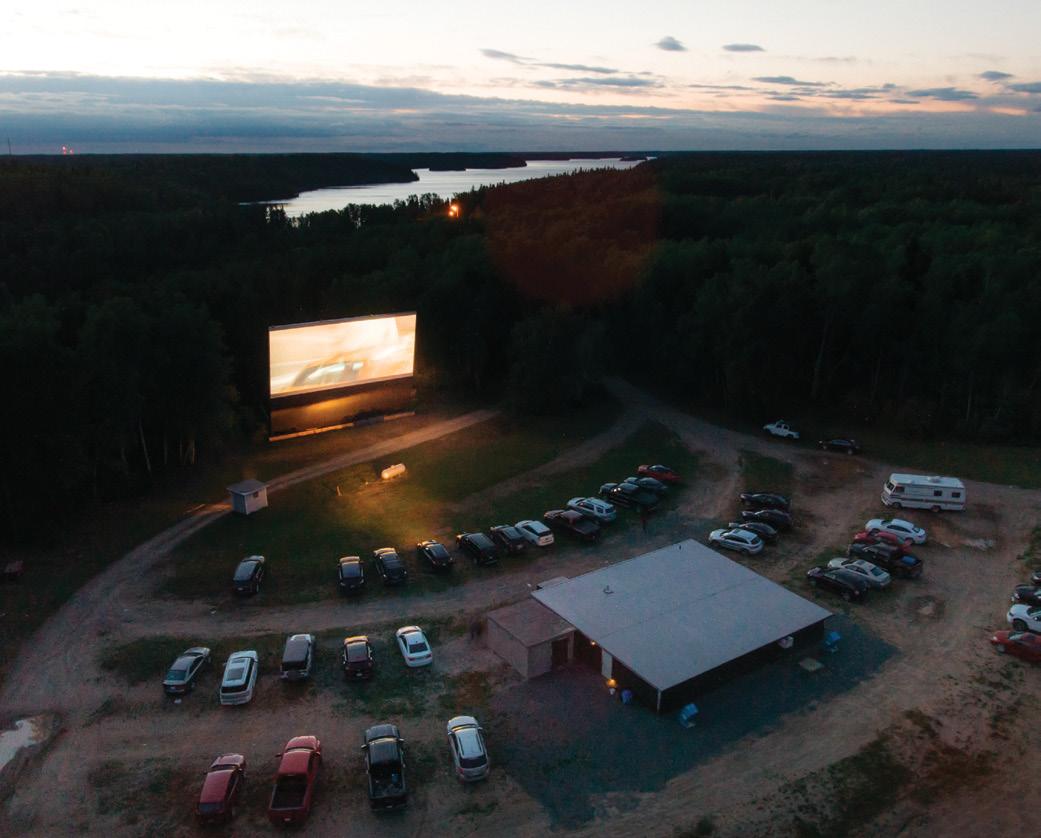
FREQUENCY OF NORTHERN TOURISM BUSINESS BY COMMUNITY
↓ Flin Flon
MANITOBA TOURISM SECTOR—COVID-19 IMPACTS
Travel Manitoba engaged Tourism Economics to forecast tourism recovery for Manitoba and assess key areas of the visitor economy under stress during the pandemic.
Tourism Economics developed three forecast scenarios, which are presented in the chart below: upside, baseline and downside. Under the baseline scenario, Manitoba does not return to 2019 visitor spending until 2024. Economic
VISITOR SPENDING IN MANITOBA, THREE SCENARIOS
$3,000
$2,500
$2,000
$1,500
$1,000
$500 $0
losses over the 2020–2024 period under the baseline scenario include $1.6 billion in visitor spending. Domestic travel to Manitoba is expected to recover more quickly than international travel. Under the baseline scenario, domestic travel to Manitoba will recover by 2023 and international travel by 2025. A slower international recovery could impact Churchill as well as hunting and fishing activity in the North.
TOURISM ECONOMICS FORECAST FOR MANITOBA TOURISM INDUSTRY RECOVERY
(Dollar values in millions)
Hunting outfitters and fly-in fishing lodges in the North have some unique challenges given the characteristics of their average customers. With the majority of their clientele based in the U.S., border closures and travel restrictions had a significant impact on businesses in 2020 and 2021. The potential for future COVID-19 waves means the possibility of changing restrictions for testing and vaccination. There is also some evidence that U.S. hunters and anglers are less likely to be vaccinated against COVID-19.
Churchill’s economy is largely dependent on tourism.
Tourism Economics calculates that tourism is 30 times more important for Churchill than for the province as a whole and likely supports more than half of all wages in Churchill. In a typical pre-pandemic year, Churchill’s tourism customers are 80 per cent international, with a large focus on U.S. clientele. Churchill had partial beluga and polar bear seasons in 2021, with significantly less focus on international clients.
Churchill is an internationally known flagship for Manitoba’s visitor economy. Its health and prosperity will impact the tourism economy in the North and the province as a whole.
INDUSTRY TRENDS
Destination Canada commissioned Resonance Consultancy to conduct an extensive environmental scan to identify trends likely to have the greatest impact on the travel and tourism industry in Canada over the next one to three years. The sections below provide a summary of the findings that are most relevant to Manitoba’s North.
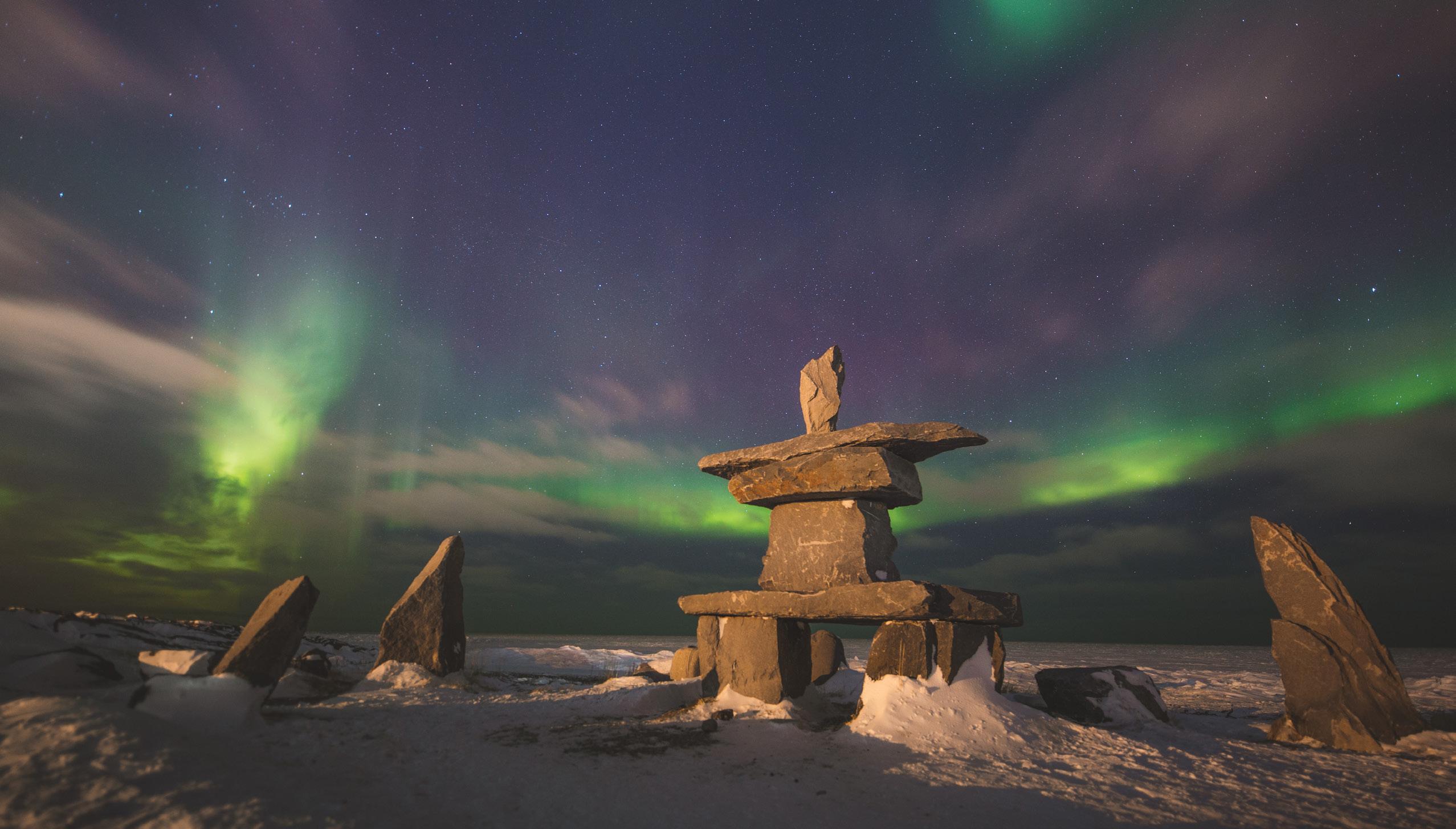
↑ Churchill
MACRO TRENDS
The pandemic has resulted in accelerated, profound socioeconomic changes that have and will continue to affect businesses and communities of all kinds. At the same time, the effects of longterm issues, such as climate change, are becoming more apparent. At a macro level, five key drivers will affect travel and tourism in northern Manitoba in both the short- and long-term:
1. COVID-19 uncertainty
New travel rules, new variants and competition for the available traveller are all factors contributing to uncertainty in demand. Northern Manitoba’s high vaccination levels, combined with many destinations offering unique nature-related experiences, may provide a competitive edge.
2. Economic change
Increased household savings have led to increased spending on travel across multiple income tiers. At the same time, costs are rising. This provides an opportunity for northern Manitoba operators to reach new customer groups, but also means enhanced cost management and planning will be needed to remain viable.
3. Social change
The growing awareness of social justice, reconciliation and Indigenous inclusiveness is providing opportunities to further diversify the industry and accelerate the development of Indigenous tourism experiences. A large Indigenous population provides northern Manitoba with an opportunity to address this demand and further reconciliation.
4. Climate change
Corporate travel will be impacted by commitments to reduce emissions through travel reduction. Extreme weather events will reduce travellers’ sense of security and increase insurance premiums for operators in high-risk areas. Northern Manitoba’s tourism sector will need to have plans in place to address the potential risks associated with climate change.
5. Accelerated digitization
COVID-19 has accelerated the adoption of digitization in the tourism industry by three to four years. There are opportunities to capitalize on more consumer data around pricing, marketing and product development. This presents potential disadvantages for northern Manitoban businesses that are not able to adapt to these changing expectations, particularly in areas where access to cellular and Wi-Fi coverage is limited.
KEY INDUSTRY TRENDS
The following trends and their implications are drawn from assessments of interviews conducted with both inbound and outbound tourism stakeholders:
1. Lack of access and reduced transport connectivity
A fundamental change in airline economics has taken place, resulting in decreased or changing demand, labour shortages and delayed aircraft orders. The rental car industry reduced its fleet size due to decreased demand early in pandemic, and supply chain disruptions are preventing fleets from rebuilding quickly. Tourism businesses in northern Manitoba continue to be impacted by reduced flight coverage into the province as well as within northern regions.
2. Labour and skill shortage
Tourism labour challenges existed pre-pandemic in certain specialized skill areas and have escalated in many areas as a result of the pandemic. Many workers have moved on to other industries, and there is also reduced access to overseas and newcomer labour. Retaining, retraining and attracting labour continues to be a challenge for the tourism sector in northern Manitoba.
3. Higher costs
Rising travel costs are fueled by pent-up demand, reduced capacity, inflation, supply chain issues and increased testing requirements. The remoteness of northern Manitoban destinations places the tourism sector at an added disadvantage given the increased costs associated with travelling to and throughout the region.
4. Product degradation
Many providers have drastically scaled back operations and services, downgrading the quality of the experience and creating travel friction and frustration for travellers. Labour shortages are also impacting product quality.
5. Reduced access to capital and limited liquidity
Tourism has always faced challenges raising debt and equity to expand. Liquidity has been extremely challenging for tourism businesses with limited revenues throughout the pandemic.
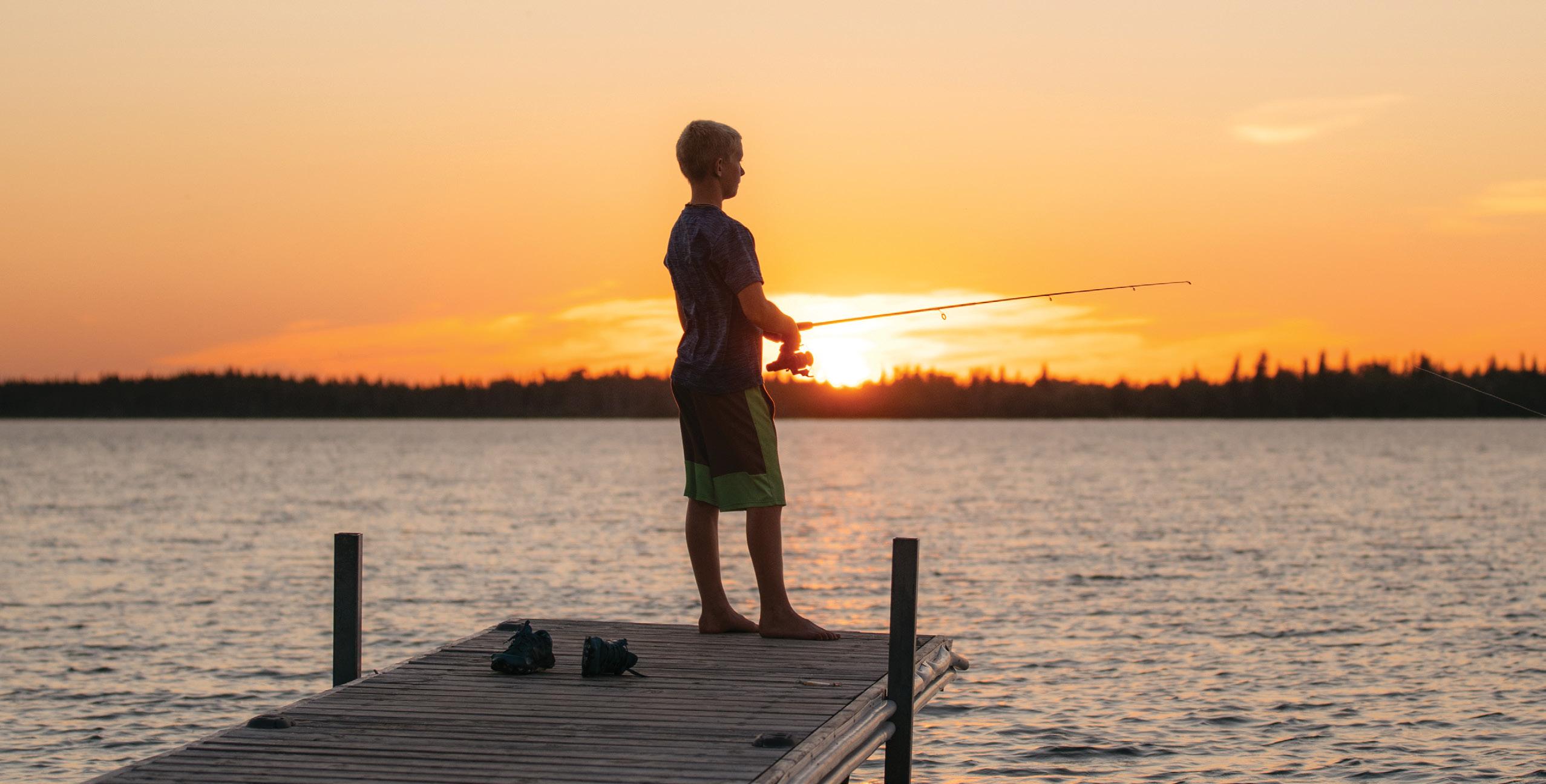
KEY MARKET TRENDS
Around the world, the tourism sector is undergoing a transformation as consumer behaviours and values shift. What visitors value—and where they spend their time and money— is changing in response to the lasting impact of the pandemic. Destinations and businesses that explore and understand these shifts can act now to adapt operational models, improve product and service development, channel marketing budgets and prepare for what’s next.
1. Domestic travel
Domestic travel will focus on connecting with family and friends. Drive-to destinations and road trip itineraries will present opportunities as many are still reluctant to stray far from home.
2. Responsible travel
The pandemic has enhanced the desire to connect in meaningful ways with places visited. The focus is on travelling less often, but with longer and deeper connections.
3. Ascendance of communities
There is a shift in focus toward the wellbeing and safety of local communities. This includes a proactive approach to harnessing the benefits of tourism while minimizing its pressures so improving quality of life can remain the overall focus. This requires greater industry, community and government alignment to drive destination competitiveness and brand development.
4. Indigenous connection
Canadian and international travellers are interested in Indigenous experiences. This provides a tremendous opportunity for northern Indigenous communities and entrepreneurs to develop land-based and cultural activities that will support economic development and reconciliation goals.
5. Wild for wilderness
There is increased interest in engaging with nature, presenting an opportunity to showcase northern Manitoba’s natural assets.
6. Health and wellbeing
The growth of wellbeing and personal enrichment has accelerated thanks to COVID-19. People are hungry for a sense of wellbeing associated with travel, escape, rejuvenation and nature-based healthfulness.
7. Affluent travel boom
Affluent travellers are driving demand for legendary experiences. The development of unique, high-quality tourism attractions in cities and wilderness is required.
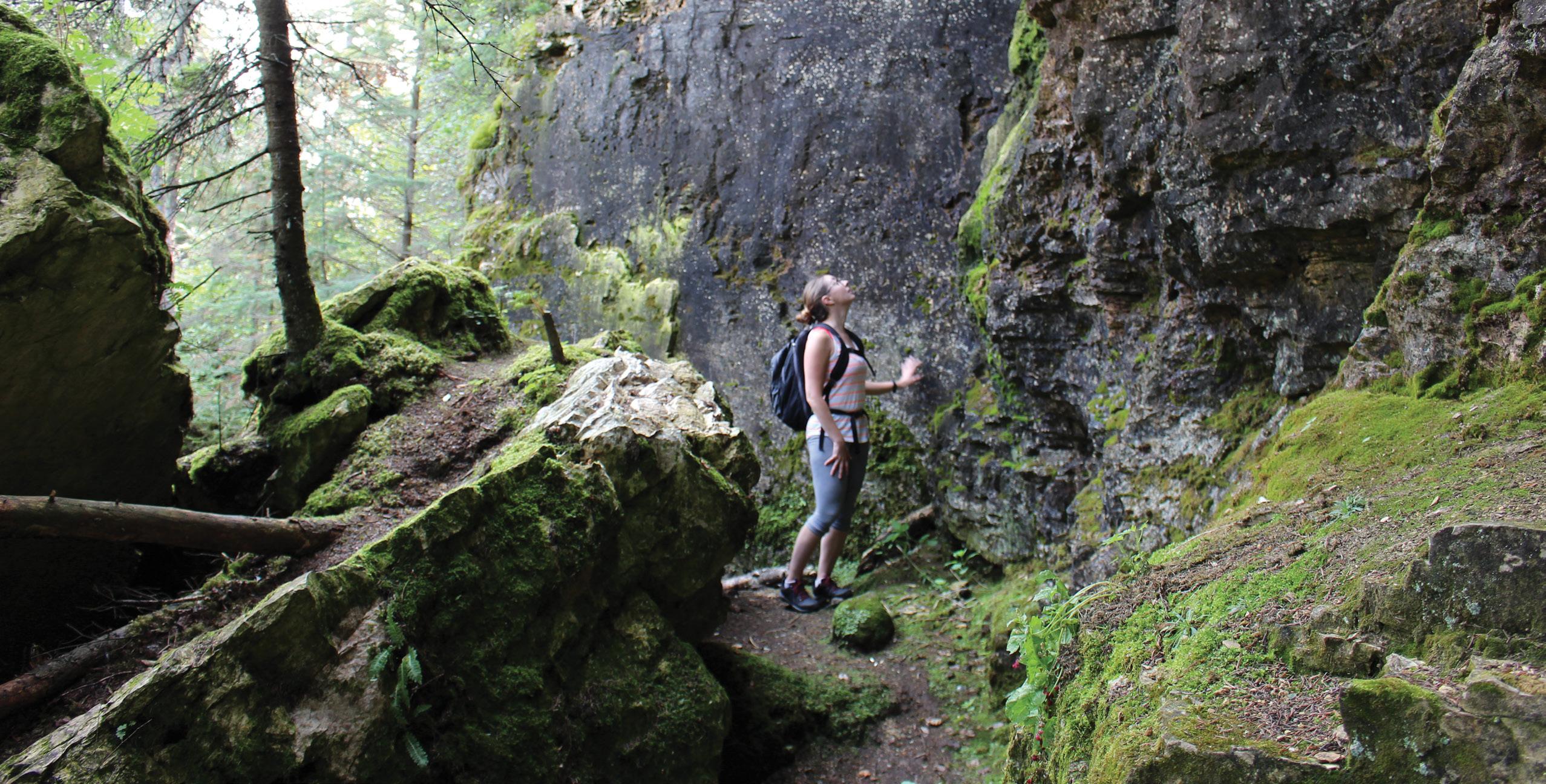
↑ Clearwater Lake
STRENGTHS, WEAKNESSES, OPPORTUNITIES AND THREATS
This section outlines strengths, weaknesses, opportunities and threats that impact Manitoba’s northern tourism industry and the ability to implement the strategy.
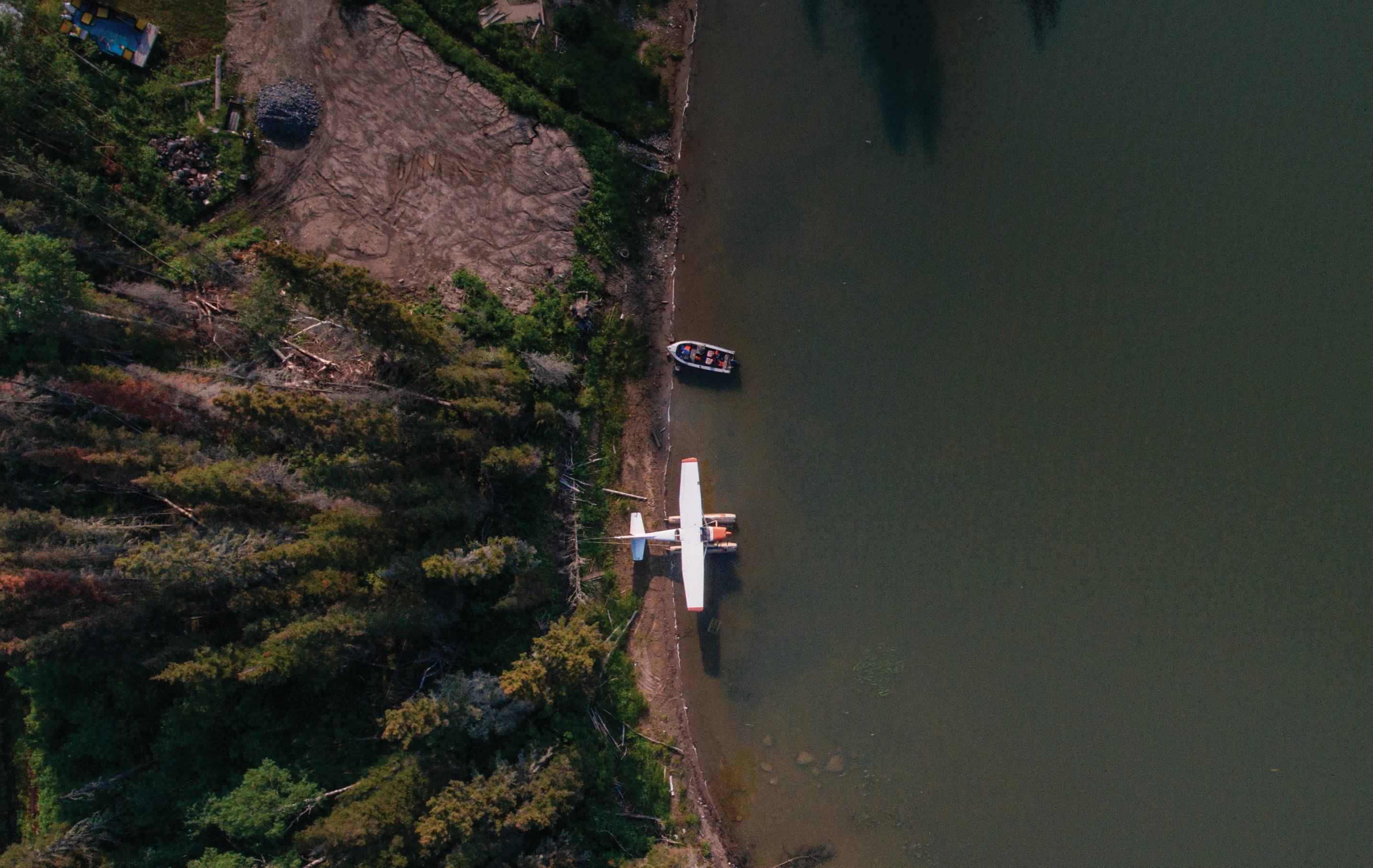
Primary Strengths:
• Northern Manitoba welcomes visitors with an abundance of clean, quiet and pristine natural destinations. It is seen as a safe place for post-pandemic travel.
• Product offerings such as northern lights viewing, fishing and hunting are well-known within Manitoba and in the U.S. Wildlife viewing, particularly in Churchill, is recognized internationally.
Secondary Strengths:
• Road and rail networks allow for affordable travel to the North from major Manitoba markets such as Winnipeg and Brandon.
• Established tour operators in Churchill have strong networks with international travel trade that could be leveraged in other regions.
• Innovative operators are driven by the desire to have a competitive advantage.
Opportunities:
• Manitoba’s large and diverse Indigenous population is wellplaced to meet increasing global interest in authentic, engaging and unique cultural experiences.
• Partnerships with community development organizations through Travel Manitoba’s Place Brand initiative can help drive the strategy at local and regional levels.
• Increased promotion of northern lights viewing, ice fishing and snowmobiling can drive significant growth in the winter season.
Secondary Opportunities:
• Develop partnerships with attractions in Winnipeg (Winnipeg Art Gallery - Qaumajuq, Assiniboine Park Zoo - Journey to Churchill, Manitoba Museum).
• Improve quality and consistency of hospitality in the North through better training, capacity-building and increased awareness of the value of tourism to the local economy.
• Share best practices and build an understanding of international trends and consumer expectations (e.g., Destination Canada and Travel Manitoba research).
↑ Thompson
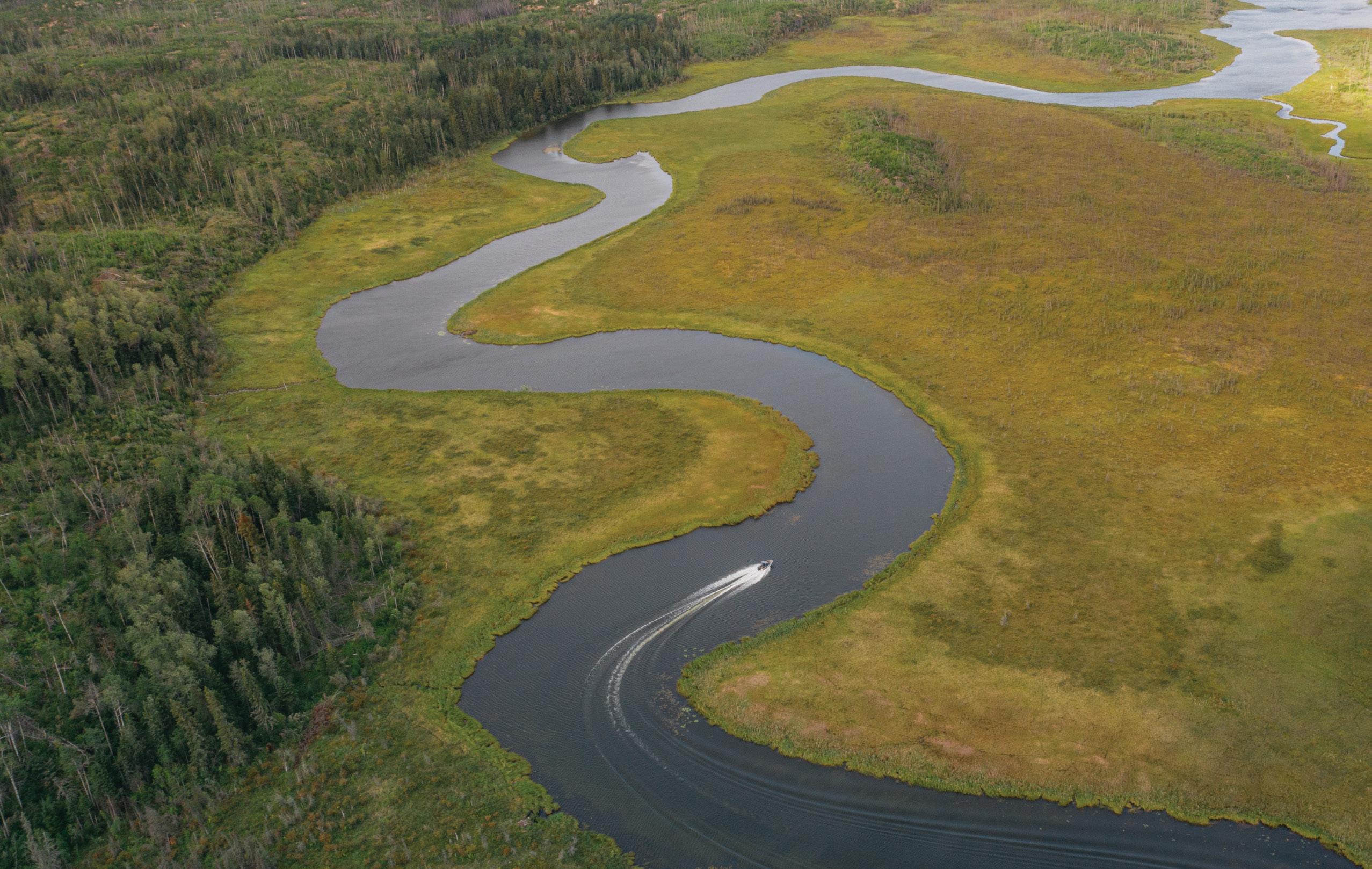
Primary Weaknesses:
• The absence of accommodations, restaurants and services outside of regional centres is a barrier to the development of tourism in small communities.
• A lack of cell service and poor internet connectivity throughout the North limits the ability of operators to serve their clients.
• A lack of rest stops, signage and roadside services discourages vehicular travel to and within the region.
Secondary Weaknesses:
• The higher cost of travel in the region places northern Manitoba at a disadvantage compared to other destinations.
• There is a general lack of awareness of the needs of visitors, the importance of tourism to the economy and a reluctance to actively promote “local treasures.”
• The aesthetic appeal of many communities does not meet the expectations of many travellers.
Primary Threats:
• The tourism sector is disproportionately impacted by COVID-19, labour shortages and fluctuations in the global economy. Some businesses will not survive, while others will need to significantly alter their business models.
• International visitors are reluctant to travel post-pandemic.
• Competition in the tourism industry will intensify as travel and health restrictions are lifted. Jurisdictions with higher vaccination rates, less illness and fewer restrictions will have a competitive advantage.
Secondary Threats:
• Long-term changes in the climate have the potential to shift the distribution and abundance of key wildlife species such as polar bears and beluga whales.
• Extreme weather events impact key infrastructure such as roads and railways, making access to remote destinations more difficult and unreliable.
• Key sectors, especially hunting and fishing, cater to an aging clientele. Businesses will need to proactively engage a younger generation that may not share the same interests and traditions as their parents and grandparents.
↑ Cranberry Portage
VISION, MISSION AND TARGET
The following vision, mission and target respond to all key learnings and inputs gathered throughout the process of updating the Northern Manitoba Tourism Strategy.
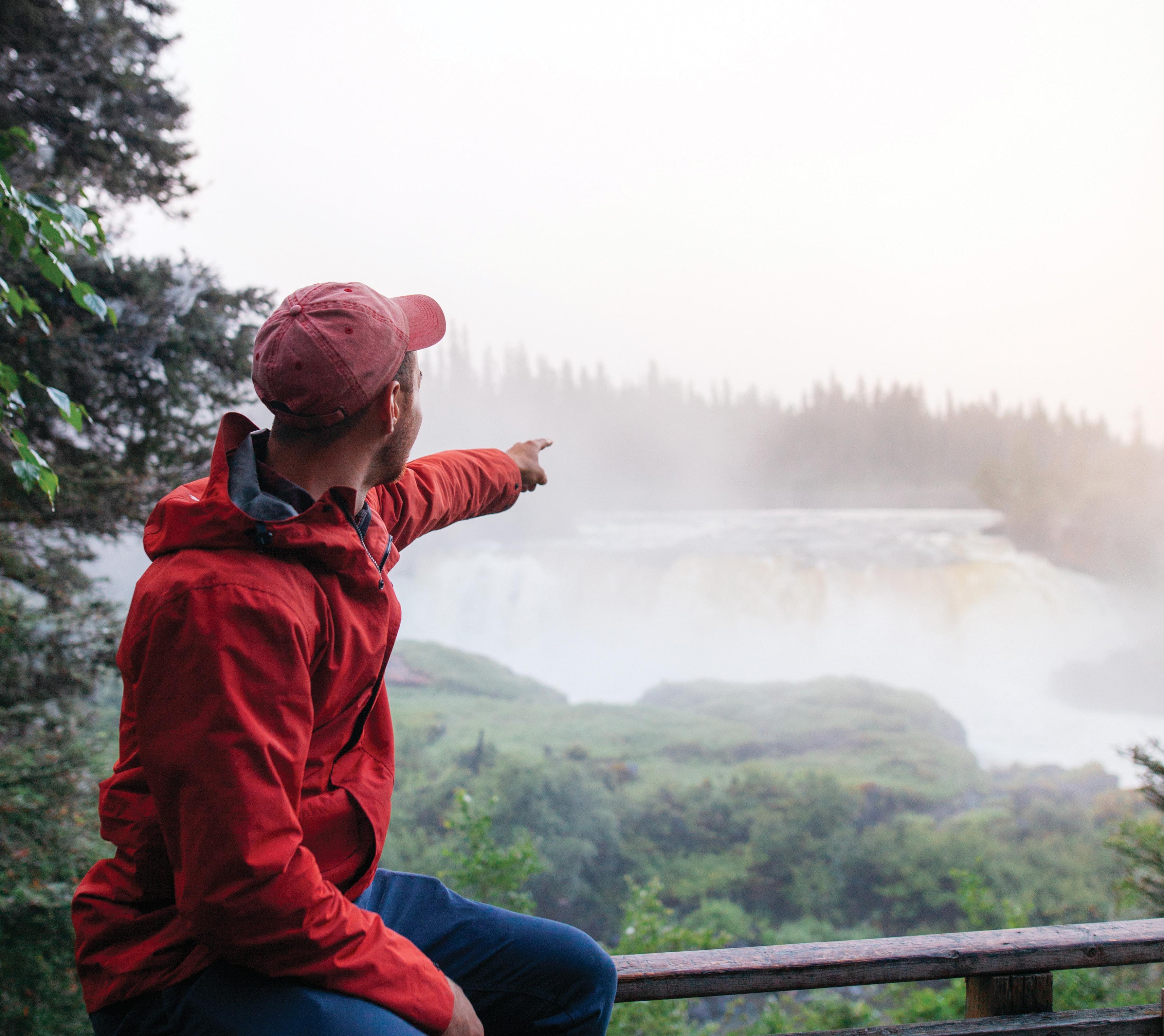
VISION
Manitoba’s North is a mustvisit four-season destination generating sustainable economic growth by delivering inspiring and authentic experiences in its unique urban, rural and wild settings.
MISSION
Rebuild the Northern Manitoba tourism sector to achieve its economic potential through marketing, product development and community engagement.
TARGET
Rebuild the northern tourism visitor economy to 2019 levels by 2024.
↑ Pisew Falls Provincial Park
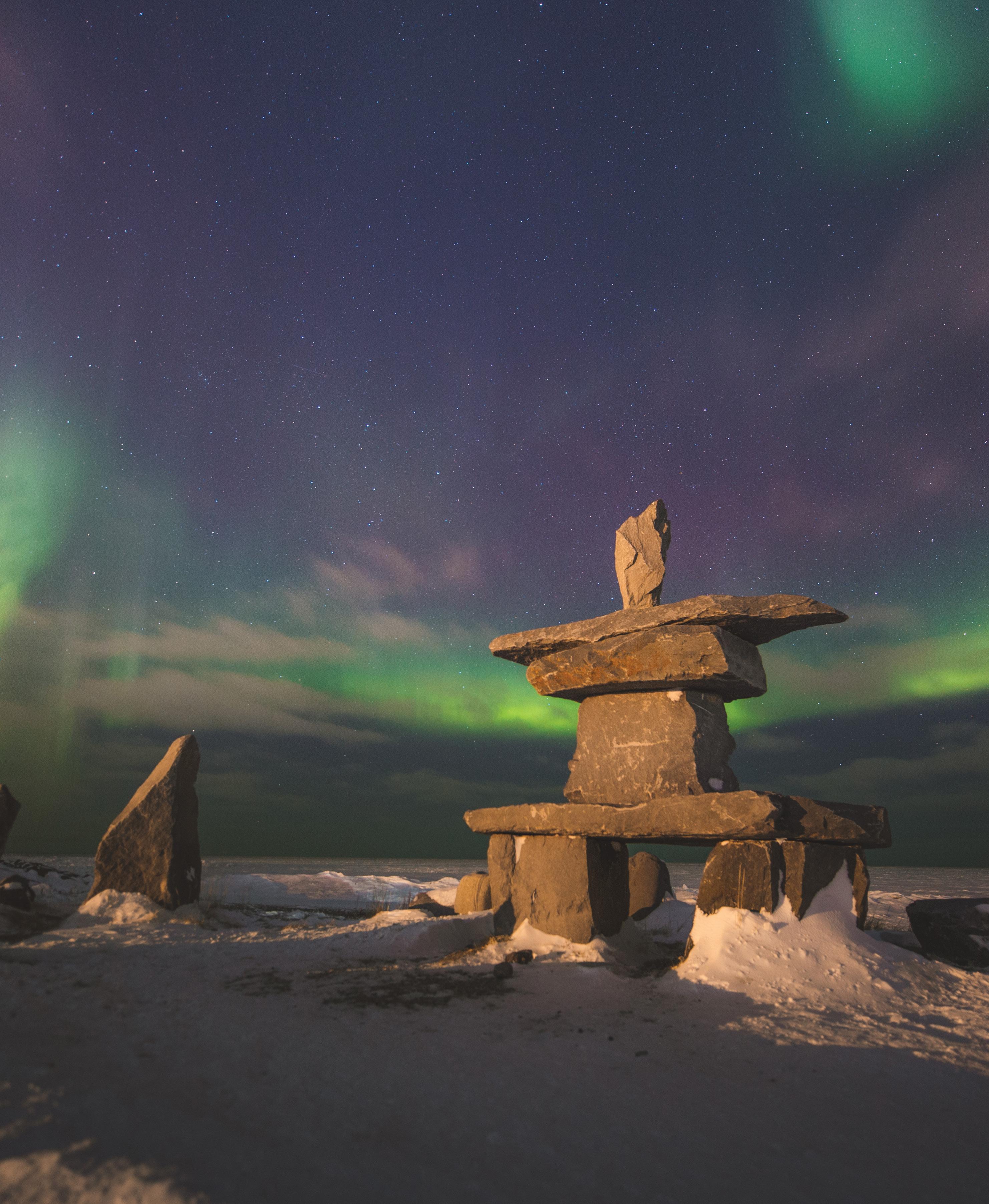
STRATEGIC GOALS
1. Lead Brand and Market Positioning
2. Build Community Leadership
3. Advance Destination Management
↑ Churchill
1. LEAD BRAND AND MARKET POSITIONING
As we welcome visitors back to northern Manitoba in the post-pandemic era, competition from other regions will be fierce. Travel Manitoba is making significant investments to market the very best of what northern Manitoba has to offer through enhancements to online resources, booking tools and community engagement. Our success will once again depend on providing a world-class experience that meets and exceeds the high standards Manitoba is known for in a safe, well-staffed and welcoming environment.
Significant progress has been made on several important lead brand and market positioning initiatives identified in the original strategy:
• Launched place brands for Flin Flon, Thompson and The Pas / OCN.
• Completed Northern Manitoba Snowmobile Tourism Strategic Plan 2019–2023 in February 2019 and introduced the Business and Community Sled-Friendly Training and Certification program in November 2021.
• Updated EverythingChurchill.com website and relaunched as a Travel Manitoba microsite on January 1, 2020.
• Promoted the northern lights season in Churchill through sustained digital marketing efforts like website, blog and social media campaigns in the 2018/19, 2019/20 and 2021/22 seasons.
• Launched and promoted SLEDMB53.ca in the Northern Manitoba Trip Ideas Guide and on Travel Manitoba’s website, and hosted crew members from Snowmobiler TV on the Quest for the Bay snowmobile tour between Thompson and Churchill.

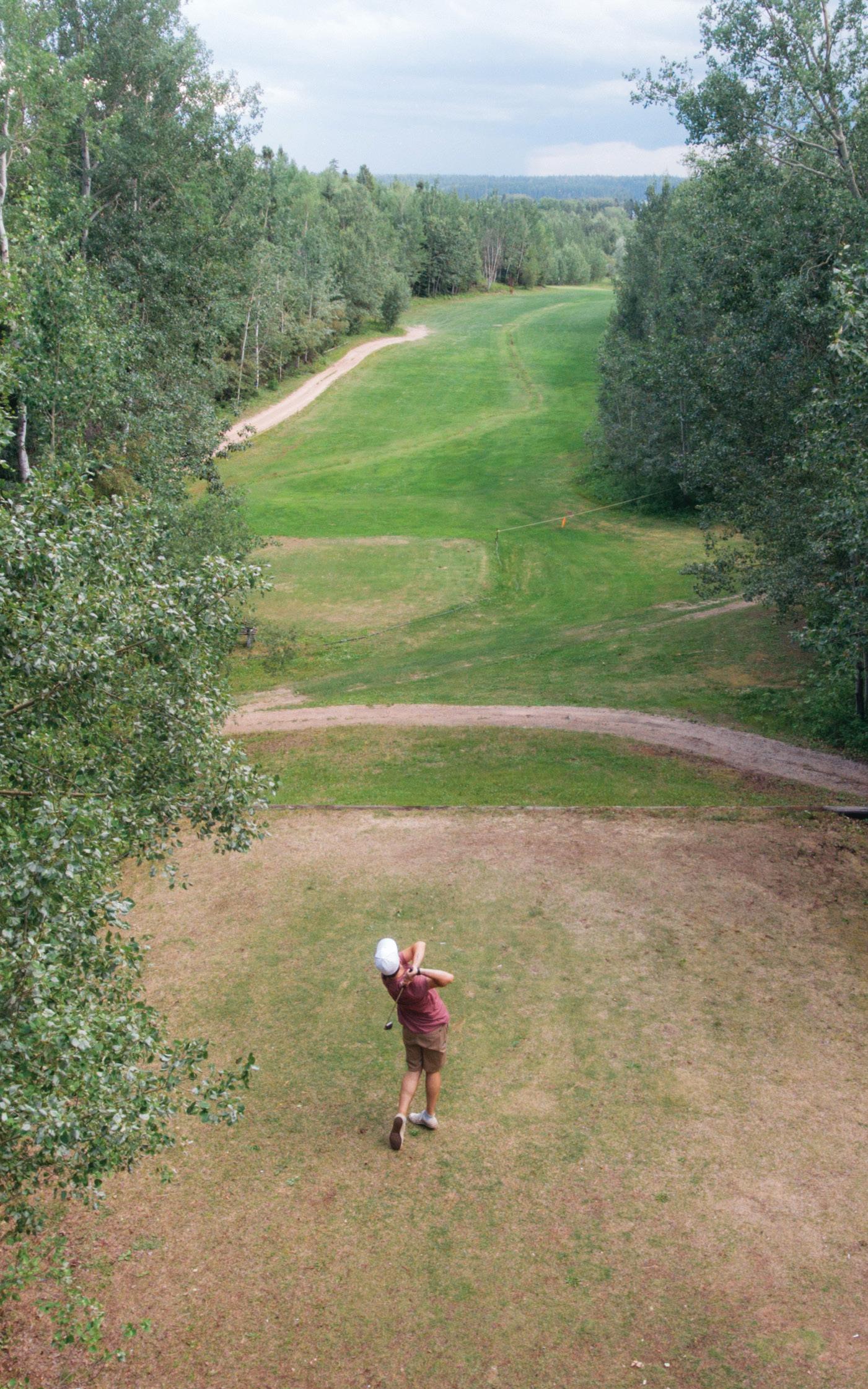
Initiatives
• Align messaging and marketing initiatives under the umbrella of the Manitoba, Canada’s Heart…Beats brand. Coordinate joint marketing initiatives with place brand communities.
• Develop photo, video and other content assets for northern communities.
• Communicate the value of tourism to business leaders, government and the general public.
• Maintain and enhance the Manitoba North section of Travel Manitoba website.
• Maximize the effectiveness of existing online apps.
• Aggressively promote northern lights as a third season for travel to Churchill.
Key Performance Indicators
• Number of content assets developed.
• Number of unique visits to Manitoba North microsite.
• Increase in visitation to Churchill during January – March.
↓ Snow Lake Mining Museum
↑ Snow Lake Golf and Country Club
2. BUILD COMMUNITY LEADERSHIP
Travel Manitoba is committed to helping northern communities explore and develop their unique tourism voice. We will continue to work with established place brand communities to develop annual marketing plans that highlight each region’s tourism offerings.
Significant progress has been made on several important community leadership initiatives identified in the original strategy:
• Created a video featuring local operators that highlights the value of the tourism industry in the North and its potential for growth.
• Launched a public campaign to promote the value of tourism through radio ads highlighting the economic and social impacts of tourism, running May 6 to June 2, 2019 in Flin Flon, The Pas, Thompson, Dauphin and Swan River/Benito in English and Cree.
• Welcomed 100 people to the first annual Northern Manitoba Tourism Awards on April 24, 2019.
• Saw Northern Manitoba shift from the Mountaineer category to the Trailblazer category between 2015 and 2019 in DestinationNEXT.
• Surmised that of northern industry partners, 70 per cent were aware of the Manitoba North Regional Travel Guide, 41 per cent were aware of the North Manitoba website and 40 per cent were aware of the Manitoba North Facebook page.

Initiatives
• Develop Municipal Advocacy Toolkit to assist communities in building the case for greater investment in local tourism.
• Develop plans for communicating and advocating on key issues to municipalities, chambers of commerce and business leaders.
• Host annual place brand event for community leaders.
• Measure northern attitudes toward tourism.
• Document positive impacts of the tourism strategy and celebrate successes.
Key Performance Indicators
• Annual place brand event.
• Results of general population survey of northern residents’ attitudes towards tourism.
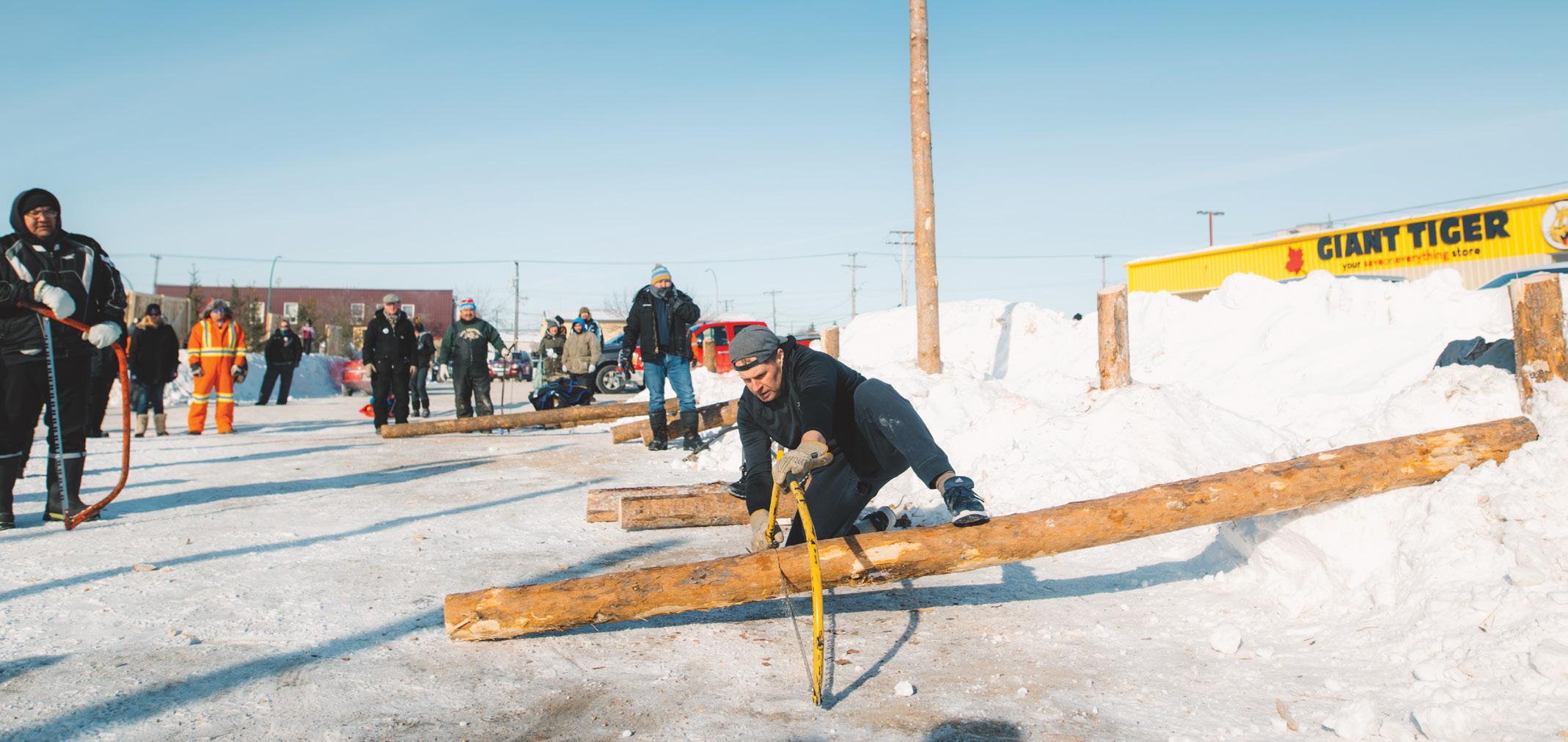
↓ Northern Manitoba Trappers’ Festival
3. ADVANCE DESTINATION MANAGEMENT
Travel Manitoba will continue to support the enhancement of existing product offerings and development of new and exciting experiences.
In partnership with Indigenous Tourism Manitoba and the Indigenous Tourism Association of Canada, we will continue to build relationships with First Nations and Métis communities to increase the number of Indigenous market- and export-ready businesses in the North.
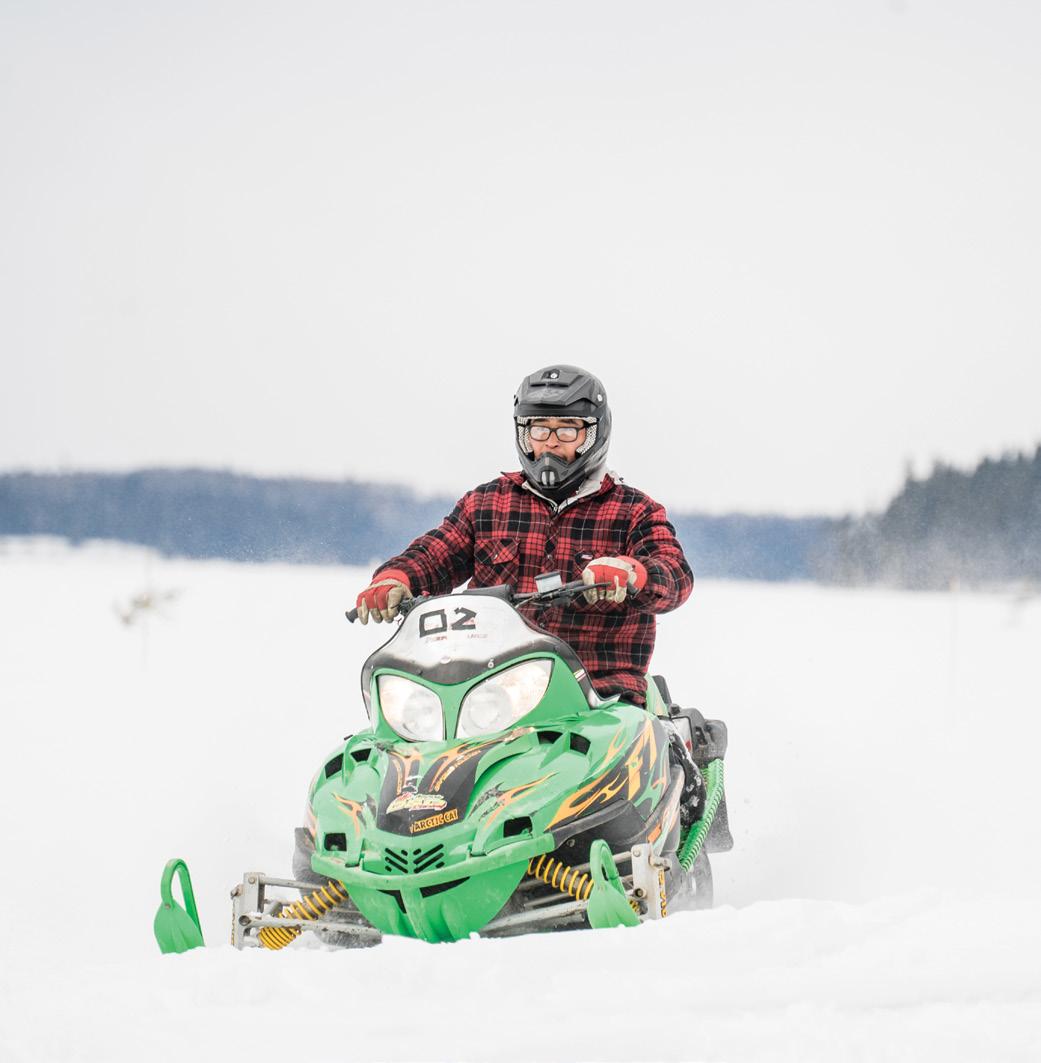
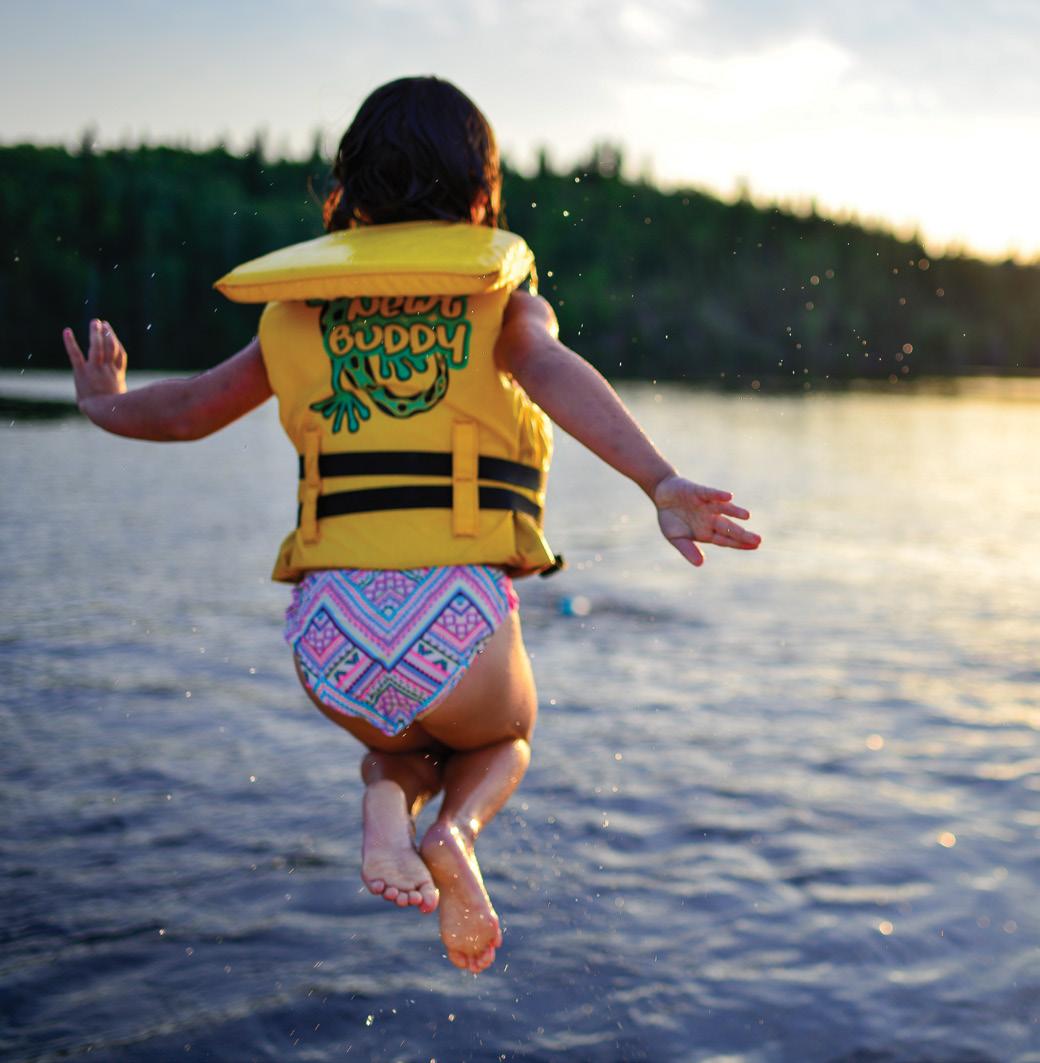
Significant progress has been made on several important destination management initiatives identified in the original strategy:
• Provided funding to support murals at the Boreal Discovery Centre in Thompson and the development of the Grace Lake Boardwalk and Trail in The Pas.
• Worked with northern hunting and fishing lodges to improve their marketing capacity and skills.
• Supported the development of several new tourism products, including Round the Bend Farm (The Pas), Grace Lake Boardwalk and Trail (The Pas), Howling Wolf Tours (Thompson), Northern Adventure Tours (Snow Lake), Arctic Gold Honey (Thompson), Canadian Kraft Paper (The Pas), Grand Rapids Fish Hatchery and Blueberry Jam Music Festival (Flin Flon).
• Launched the Tourism Innovation and Recovery Fund in late 2021, with the goal of increasing the number and quality of market- and export-ready businesses in Manitoba. A total of 50 projects were approved for funding, representing a total investment exceeding $1 million. Twelve (24 per cent) of these projects will take place in the North. These new and enhanced experiences will be launched in 2022.
Initiatives
• Develop tourism readiness checklist and training tools.
• Develop an inventory of tourism products and assess export readiness in key opportunity areas such as Indigenous, Francophone, water-based experiences, attractions and winter.
• Develop winter tourism plans for key opportunity areas including ice fishing and snowmobiling.
• Conduct a competitive assessment and gap analysis.
• Address labour and skill shortages and develop training programs to mitigate challenges.
• Partner with Indigenous Tourism Manitoba and Indigenous Tourism Association of Canada to increase the number of Indigenous market- and export-ready businesses in the North.
• Assess signage and wayfinding, as well as air, road and rail services, to identify gaps and advocate for enhancements.
Key Performance Indicators
• Number of northern tourism products assessed as market-and export-ready.
• Number of individuals employed/recruited in the tourism sector.
• Number of new market- and export-ready Indigenous businesses in the North.
↓ Thompson
↑ Big Island Lake
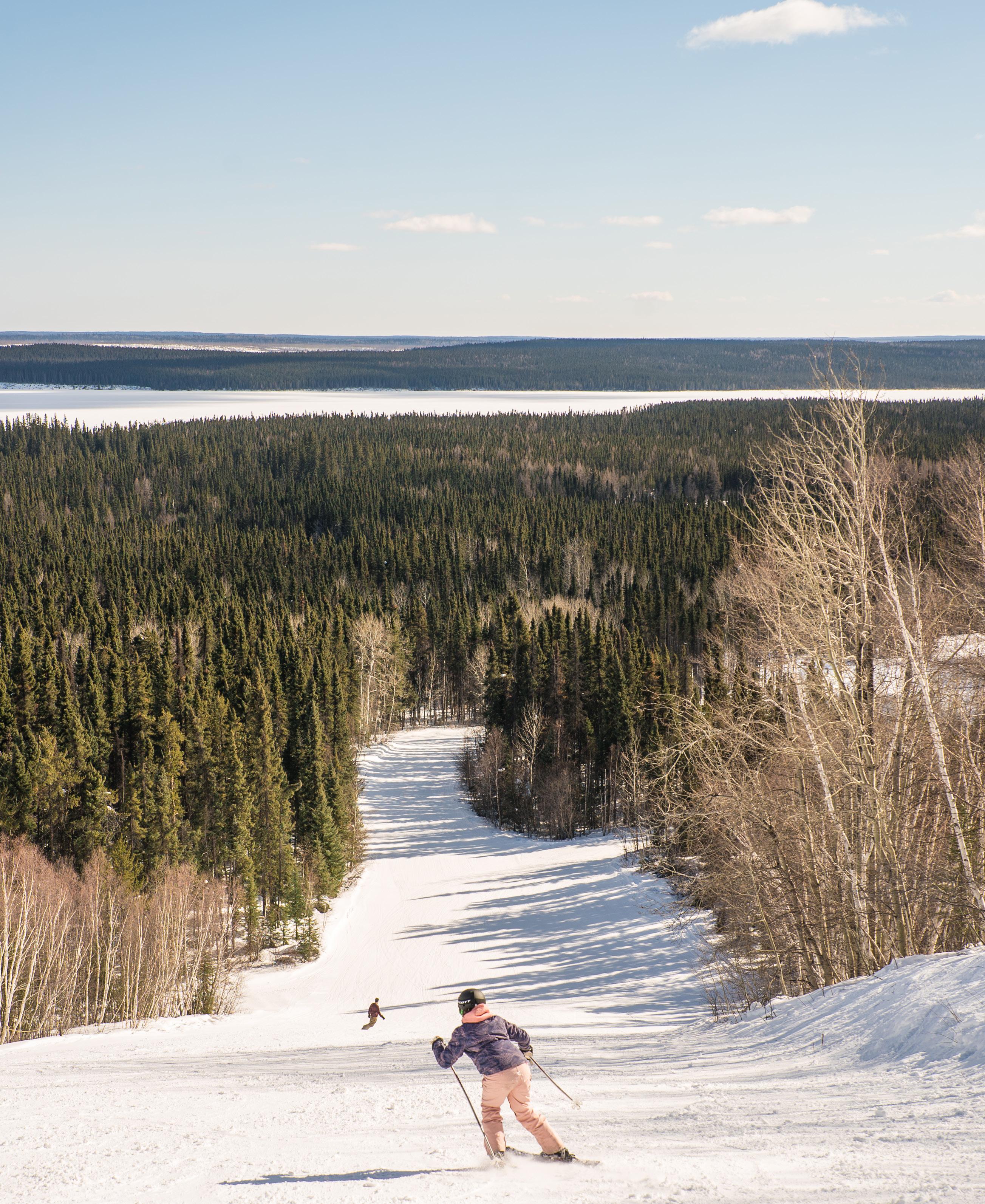
NEXT STEPS
This strategy provides the framework for successful recovery and growth of Manitoba’s northern tourism sector. It addresses barriers to industry growth while capitalizing on opportunities to showcase northern Manitoba’s vast cultural and natural assets. The Northern Tourism Strategy Advisory Committee will review this strategy on an annual basis to assess progress and make updates if required.
↑ Mystery Mountain
APPENDIX A: COMMUNITY ASSESSMENT
CHURCHILL
POPULATION:
ECONOMY:
TRANSPORTATION:
ATTRACTORS:
• 870 (2021), decrease from 899 (2016)
• Tourism, Healthcare, Rail and Marine Shipping, Scientific Research
• Scheduled air service from Winnipeg (frequency seasonally dependent)
• Rail service from Winnipeg (2X/week) and Thompson (3X/week)
• No road access to the south
• Helicopter charters
• Polar bears
• Beluga whales
• Birds
• Aurora borealis (northern lights)
• Indigenous culture
ATTRACTIONS:
• Parks Canada Visitor Centre
• Prince of Wales Fort National Historic Site
• Sloop Cove
• Cape Merry Battery
• Churchill Wildlife Management Area
• Itsanitaq Museum
• Churchill Northern Studies Centre
EVENTS:
• Hudson Bay Quest Dogsled Race
• Aurora Winterfest
• Hudson Bay Dip
ACCOMMODATIONS:
• 203 total rooms
Churchill has a rich cultural history dating back to the earliest occupation of the land by people of the pre-Dorset culture approximately 1700 years BCE. Since that time, the region has been home to the Thule (ancestors of today’s Inuit), Denesuline and Nehethowuk Nations. The fur-trading ambitions of the Hudson Bay Company beginning in the late 17th century brought those of European and Métis descent to the area. Churchill has a well-developed tourism industry based on internationally recognized wildlife viewing opportunities for polar bears, beluga whales and migratory birds. Growing interest in viewing the northern lights is helping to develop Churchill into a true four-season tourism destination.
THOMPSON
PLACE BRAND LOGO:
POPULATION:
ECONOMY:
TRANSPORTATION:
• 13,035 (2021), decrease from 13,678 (2016)
• Mining, Health and Social Services, Retail, Transportation, Cold Weather Testing, Post-secondary Education, Tourism
• Scheduled air service from Winnipeg (daily)
• Float plane charters
• Rail service from Winnipeg (2X/week) and The Pas (3X/week)
• Bus to/from Winnipeg (daily) and outlying communities (less frequently)
• PTH6 (Winnipeg), PR391 (Nelson House, Lynn Lake) and PR280 (Gillam, York Landing)
ATTRACTORS:
ATTRACTIONS:
EVENTS:
ACCOMMODATIONS:
NEARBY COMMUNITIES:
• Food and retail
• Fishing and hunting
• Spirit Way
• Heritage North Museum
• Pisew Falls – Kwasitchewan Falls
• Mystery Mountain Winter Park
• King Miner Statue
• Paint Lake Provincial Park
• Nickel Days – King Miner Contest
• Thompson Aboriginal Day
• 625 total rooms
• Gillam
• Wabowden
• Nelson House
Founded in 1965 to support the mining industry, Thompson serves as an important regional centre for more than a dozen outlying First Nations communities. The city provides access to health care, social services, educational opportunities and retail shopping. Thompson also gives logistical support to many remote fly-in fishing and hunting lodges.
With ample accommodations and a full range of food and beverage services, Thompson is ideally situated to support tourism development in smaller outlying communities where these services are lacking.
THE PAS / OPASKWAYAK CREE NATION (OCN)
PLACE BRAND LOGO:
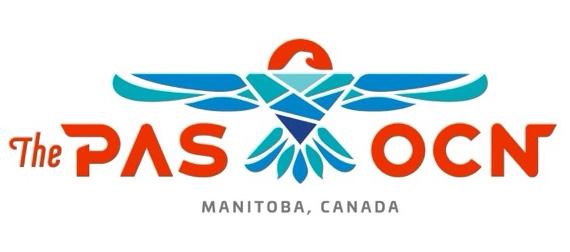
POPULATION:
• The Pas: 5,639 (2021), increase from 5,369 (2016)
• Opaskwayak Cree Nation: 2,895 (2021), decrease from 3,039 (2016)
• Rural Municipality of Kelsey: 2,181 (2021), decrease from 2,419 (2016)
ECONOMY: • Forestry, Agriculture, Post-secondary Education, Commercial Fishing, Tourism
TRANSPORTATION:
ATTRACTORS:
• Scheduled air service from Winnipeg (5-6X/week)
• Rail service from Winnipeg (2X/week) and Thompson (3X/week)
• Bus to/from Winnipeg (4X/week) and outlying communities (less frequent)
• PTH10 (Winnipeg), PTH39 (Thompson) and PR283 (Carrot River, SK)
• Indigenous culture
• Northern Manitoba Trappers’ Festival
• Fishing, ice fishing and hunting
ATTRACTIONS:
• Clearwater Provincial Park
• Sam Waller Museum
• Aseneskak Casino
• Opasquia Trails Grace Lake Boardwalk
• The Pas Railway Station
EVENTS: • Northern Manitoba Trappers’ Festival
• Opaskwayak Indigenous Days
ACCOMMODATIONS: • 188 total rooms
NEARBY COMMUNITIES: • Cormorant
• Moose Lake
• Wanless
A 6.5-hour drive north of Winnipeg, The Pas / OCN is a convenient, accessible location for a variety of fishing, hunting and nature-oriented activities. OCN, located on Treaty 5 Territory, is ideally suited to meet the growing public interest in authentic, educational and inspiring Indigenous experiences.
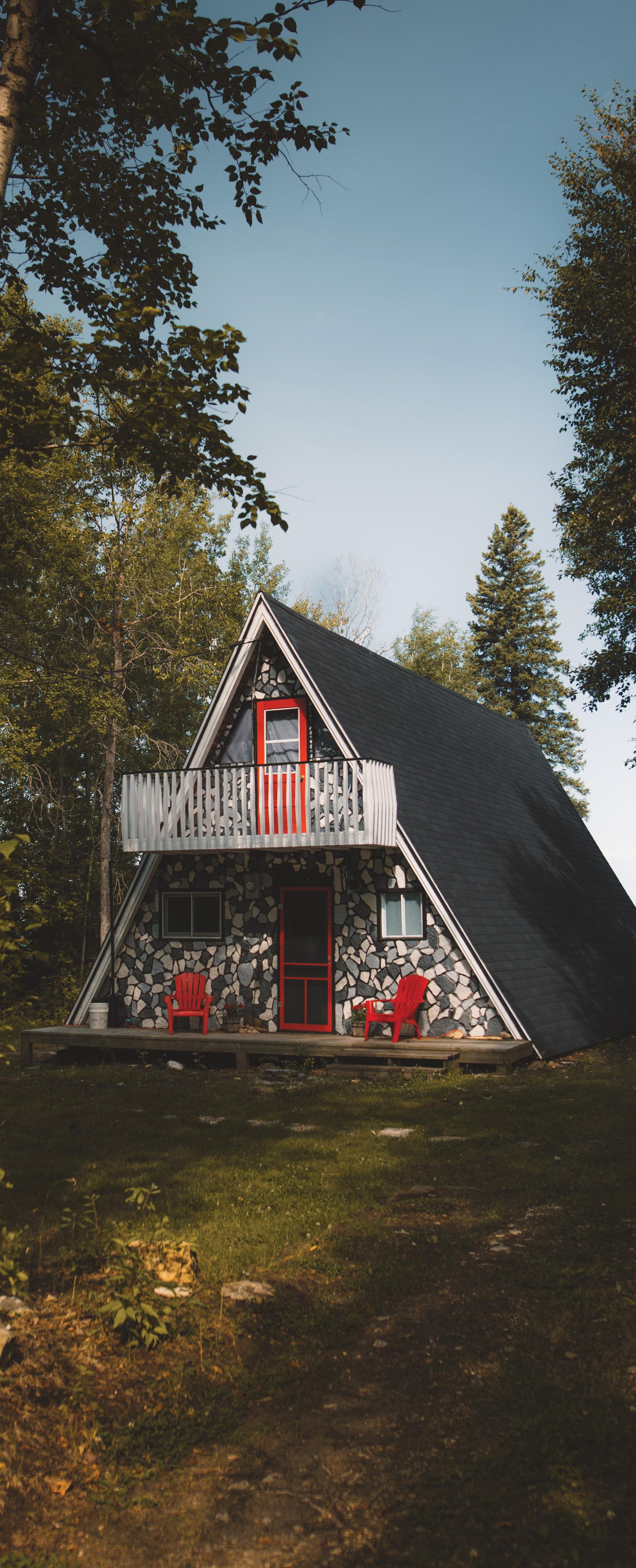
↑ Clearwater Provincial Park
FLIN FLON
BRAND PLACE LOGO:
POPULATION:
ECONOMY:
TRANSPORTATION:
• Flin Flon: 4,940 (2021), decrease from 4,991 (2016)
• Creighton, SK: 1,203 (2021), decrease from 1,402 (2016)
• Mining, Education, Tourism
• Scheduled air service from Winnipeg (5-6X/week)
• Float plane charters
• Rail service (freight only)
• Bus to/from Winnipeg (4X/week)
• PTH10 (Winnipeg), PTH39 (Thompson) and Highway 167 (Creighton, SK)
SNOW LAKE
POPULATION:
ECONOMY:
TRANSPORTATION:
ATTRACTORS:
ATTRACTIONS:
EVENTS:
ACCOMMODATIONS:
NEARBY COMMUNITIES:
• Camping
• Fishing and hunting
• Grass River Provincial Park
• Flin Flon Station Museum
• Joe Brain Petting Zoo
• Northern Visual Arts (NorVA) Centre
• Bakers Narrows Provincial Park
• Bust the Blues Winter Festival
• Blueberry Jam Music Gathering
• Flin Flon Trout Festival
• 93 total rooms
• Creighton and Denare Beach, SK
• Cranberry Portage
• Sherridon
The colourful mining city of Flin Flon straddles the Manitoba –Saskatchewan border and is built upon the dramatic exposed bedrock of the Canadian Shield. In addition to beautiful scenery, pristine lakes and boreal forest, Flin Flon is home to a large and vibrant arts community.
The community’s last operating mine is anticipated to close in 2022 as the industry shifts activity to the nearby community of Snow Lake, ushering in a period of significant transition for the city. Due to their proximity, the Saskatchewan communities of Creighton and Denare Beach contribute to Flin Flon’s standing as a regional tourism destination. Areas of potential tourism development include winter activities such as ice fishing and snowmobiling.
• 1,088 (2021), increase from 899 (2016)
• Mining, Mineral Exploration
• Fixed-wing, helicopter and float plane charters
• Creighton Connection (bus line) between Saskatoon and Creighton
• PR392, PTH39 (The Pas, Flin Flon via PTH10, Thompson via PTH6)
ATTRACTORS:
ATTRACTIONS:
EVENTS:
ACCOMMODATIONS:
• Outdoor adventure
• Fishing and hunting
• Snow Lake Mining Museum
• Wekusko Falls Provincial Park
• Wekusko Falls
• Tramping Lake Pictographs
• Herb Ghost Town
• Winter Whoot Festival
• 17 total rooms
Snow Lake finds itself in the enviable position of being one of northern Manitoba’s growing communities. The recent expansion of mining activities in the area is drawing more economic activity to the town and setting the stage for increased tourism development in the years ahead. Abundant in natural beauty, Snow Lake boasts several fishing and hunting lodges, public beaches and camping at Wekusko Falls Provincial Park.
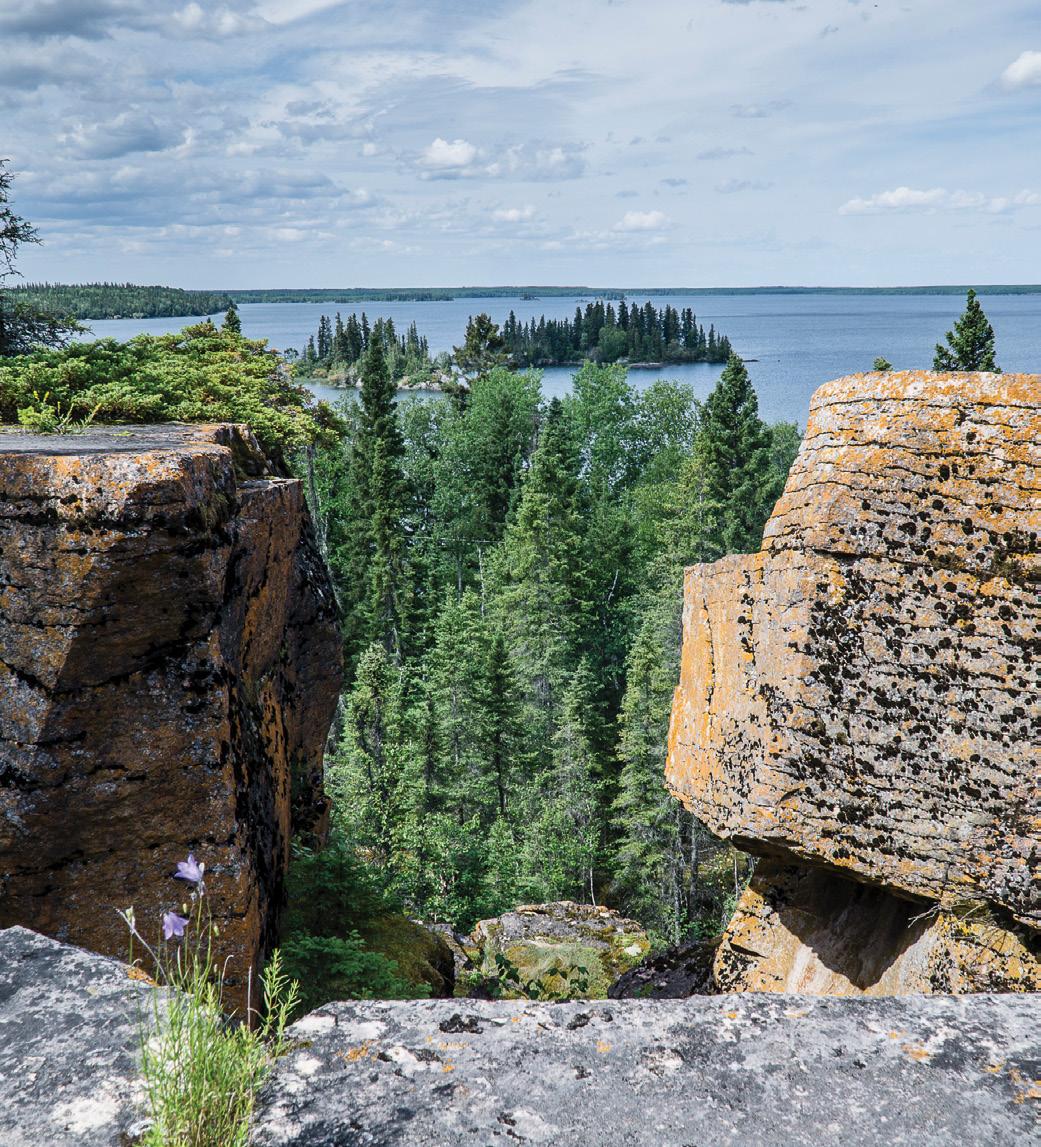
↓ Herb Lake Landing

CRANBERRY PORTAGE
POPULATION: • 608 (2021), decrease from 771 (2016)
ECONOMY:
TRANSPORTATION:
ATTRACTORS:
• Education, Tourism, Logging
• Rail service (accessed at The Pas)
• Float plane access
• PTH10 (Flin Flon and The Pas)
• Fishing and hunting
• Outdoor adventure
• Fur trade history
ATTRACTIONS:
• Cranberry Portage Park
• Cranberry Portage Heritage Museum
• Cranberry Portage Hiking and Ski Trails
• Northern Buffalo Art Gallery
EVENTS:
ACCOMMODATIONS:
• Artisan Market
• Bombardier Rally (tracked machines)
• 45 total rooms
Rich in history, Cranberry Portage has been populated for at least 2,500 years. It was known to Indigenous Peoples as the “Cranberry Carrying Place” and served a key role as part of the fur trade route to Hudson Bay. Today, the Cranberry and Athapapuskow Lakes support world-class fishing and hunting vacations.
Cranberry Portage’s proximity to the mining and forestry centres of Flin Flon and The Pas provides locals with livelihoods in these industries. The community’s small size belies a vibrant arts and culture scene, and residents showcase their talents at Artisan Markets held monthly throughout the summer. Frontier Collegiate accommodates students from nearby remote communities pursuing secondary education and is an important part of the local economy.
MISIPAWISTIK CREE NATION (GRAND RAPIDS)
POPULATION:
ECONOMY:
TRANSPORTATION:
• 1,160 (2021), slight increase from 1,136 (2016)
• Hydroelectric Power Generation, Education, Administration, Subsistence Harvesting
• Bus service between Winnipeg and Thompson (daily)
• PTH6 (Winnipeg and Thompson)
ATTRACTORS:
ATTRACTIONS:
ACCOMMODATIONS:
NEARBY COMMUNITIES:
• Fishing and hunting
• Outdoor adventure
• Manitoba Hydro Generating Station
• Little Limestone Lake
• Grand Rapids Fish Hatchery
• 12 total rooms
• Chemawawin Cree Nation (Easterville)
• Mosakahiken Cree Nation (Moose Lake)
Grand Rapids was one of the only major obstacles along the Saskatchewan and North Saskatchewan Rivers linking Lake Winnipeg to the historic fur trade routes of the west. Nineteenth century innovations such as freight trams (pulled by horses along a narrow-gauge railway) and steamboats, were used to circumvent the rapids. Today, Grand Rapids is home to a major hydroelectric generating station and fish hatchery.
Little Limestone Lake, located 65 km north of Grand Rapids, is considered one of the best examples of a marl lake. Its waters change colour throughout the day from turquoise to robin’s egg blue as dissolved calcite reacts to the heat of the sun.
Misipawistik Cree Nation is the home community of Ovide Mercredi, former National Chief for the Assembly of First Nations and a lawyer specializing in constitutional law.
↓ Cranberry Portage

GILLAM
POPULATION:
ECONOMY:
TRANSPORTATION:
ATTRACTORS:
ATTRACTIONS:
• 1,007 (2021), decrease from 1,201 (2016)
• Hydroelectric Power Generation, Construction
• Scheduled air service from Winnipeg
• Float plane charters
• Rail service from Winnipeg (2X week) and The Pas (3X week)
• PR280 (Thompson)
• Hydro dams
• Fishing and hunting
• Boat Tours on the Nelson River
• Day Trips to York Factory National Historic Site
• Manitoba Hydro Tours
EVENTS:
ACCOMMODATIONS:
NEARBY COMMUNITIES:
• Welcome Back Weekend (early September)
• 54 total rooms
• Tataskweyak Cree Nation (Split Lake)
• Fox Lake Cree Nation (Bird)
• York Landing
Gillam was founded in the mid-1960s to support the development of hydroelectric power generation in northern Manitoba. It is currently home to four generating stations: Kettle, Long Spruce, Limestone and Keeyask.
The area’s many lakes and rivers support several fishing lodges and visitors can travel up the Nelson River to access York Factory National Historic Site, a massive fur trade-era depot situated on the shore of Hudson Bay.
LYNN LAKE
POPULATION:
ECONOMY:
TRANSPORTATION:
ATTRACTORS:
ATTRACTIONS:
EVENTS:
ACCOMMODATIONS:
NEARBY COMMUNITIES:
• 579 (2021), increase from 494 (2016)
• Health and Social Services, Mineral Exploration, Fishing and Hunting
• Airport with 1,500 metre paved runway (no scheduled service)
• Float plane charters
• PR391 (Thompson)
• Fishing and hunting
• Outdoor adventure
• Lynn Lake Mining Town Museum
• Zed Lake and Burge Lake Provincial Parks
• Great Northern Pike Festival
• 40 total rooms
• Marcel Colomb First Nation (Black Sturgeon)
• Kinoosao, Saskatchewan
The mining town of Lynn Lake was established in the mid-1950s when the community of Sherridon was relocated, as intact structures, by tractor train 265 kilometres north along winter roads to the present site of Lynn Lake. Minerals mined over the years include nickel, copper, zinc and gold. Although active mining in the area ceased in the early 2000s, mineral exploration is ongoing with plans to bring a new gold mine into production in the near future.
The area has long been regarded as a sportfishing paradise and fly-in lodges in the area cater to visitors from throughout the U.S. and Canada. Located at the end of Provincial Road 391, also named “Life is a Highway” in honour of musician Tom Cochrane and his hometown, Lynn Lake is well worth the drive.
↓ Lynn Lake

LEAF RAPIDS
POPULATION: • 351 (2021), decrease from 582 (2016)
ECONOMY:
TRANSPORTATION:
ATTRACTORS:
ATTRACTIONS:
ACCOMMODATIONS:
NEARBY COMMUNITIES:
• Health and Social Services, Tourism
• Airport with 914 metre paved runway (no scheduled service)
• Float plane charters
• PR391 (Thompson), PR493 (South Indian Lake)
• Fishing and hunting
• Leaf Rapids Town Centre Complex
• 35 total rooms
• O-Pipon-Na-Piwin Cree Nation (South Indian Lake)
The town of Leaf Rapids was constructed in 1971 as a model of a new planned community. The centrepiece of the development, the massive Leaf Rapids Town Centre Complex, housed a wide variety of commercial, educational, recreational and administrative services and was the recipient of the 1975 Vincent Massey Award for Urban Excellence.
Leaf Rapids served the mining industry for three decades before the nearby Ruttan Mine was closed in 2002. It now provides healthcare and other social services to the outlying community of South Indian Lake and a jumping off point for those seeking outdoor adventure on the region’s many lakes and rivers.
NORWAY HOUSE CREE NATION
POPULATION: • 5,753 (2021), increase from 5,285 (2016)
ECONOMY: • Administration, Health and Social Services, Hunting and Fishing
TRANSPORTATION:
• Scheduled air service from Winnipeg (daily)
• Float plane charters
• PR373 (Thompson and Winnipeg via PTH6)
ATTRACTORS:
• Fishing and hunting
• Fur trade history
ATTRACTIONS: • Sea Falls Park
• Norway House National Historic Site
EVENTS: • Treaty and York Boat Days
ACCOMMODATIONS: • 39 total rooms
NEARBY COMMUNITIES: • Cross Lake
Norway House served as the principal depot for the Hudson Bay Company’s Athabasca Brigade, moving furs, trade goods and supplies between York Factory on Hudson Bay and many inland trading posts throughout western Canada. These arduous journeys were made using York Boats, open wooden boats manned by six or eight tripmen and capable of carrying twice the cargo of a birchbark canoe. Each summer, Treaty and York Boat Days honours this tradition with boat races and community celebrations.
In 1875, Treaty 5 was signed at Norway House between the Saulteaux (Ojibwa), the Swampy Cree First Nations people and the Crown. The area remains popular today with canoeists and other outdoor adventure seekers.
APPENDIX B: PROJECT TEAM
NORTHERN TOURISM STRATEGY ADVISORY COMMITTEE
Gary Bell (Chair) – Calm Air
Tara Stefansson – Lazy Bear Expeditions
Tim Johnston – Community Futures North Central Development
Colleen Smook – City of Thompson
Kathy Ruiter – Paint Lake Lodge
Joe Cote – Community Futures Cedar Lake Region
Kelly Heape – Watchi Bay Bed and Breakfast
Lori Lathlin – Opaskwayak Cree Nation
Becky Cianflone – Community Futures Greenstone
Laura Finlay – Community Futures North Central Development
Stephanie Johnson – Communities Economic Development Fund
TRAVEL MANITOBA
Colin Ferguson, President and CEO
Brigitte Sandron, Executive Vice-President and Chief Operating Officer
Jackie Tenuta, Vice-President, Destination Management
Mike Goodyear, Northern Tourism Consultant
LLOYD FRIDFINNSON CONSULTING
Lloyd Fridfinnson
